Baku Day Excursion
Azerbaijan Travelogue - Part 2
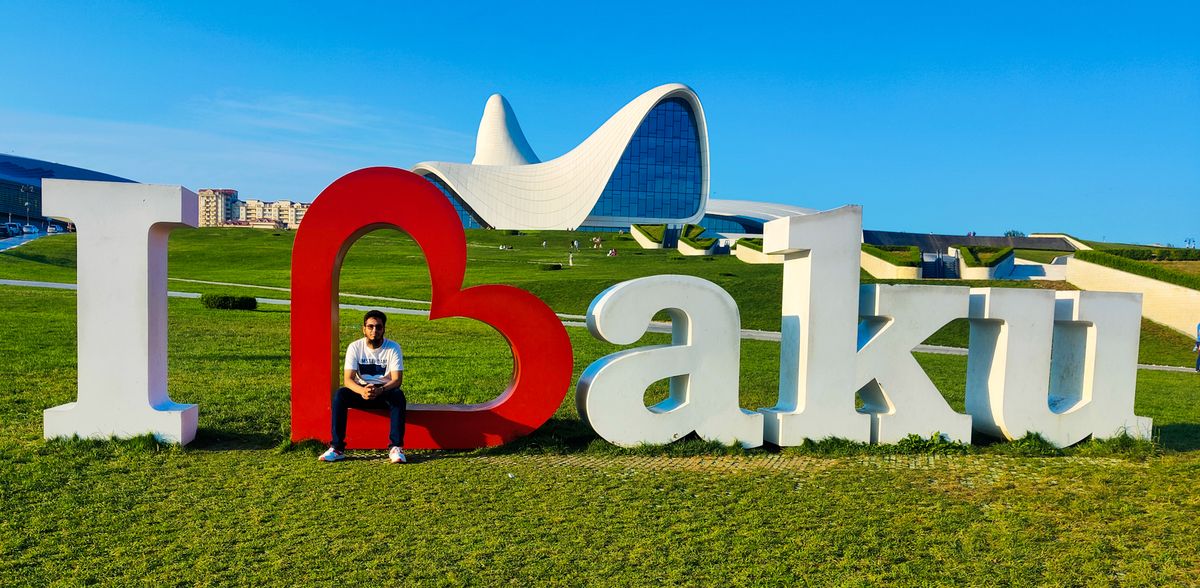
My initial days in Baku were all about settling in nice and easy. I spent a couple of days adjusting in my habitat, purchasing a data sim to bring myself back from the Stone Age to the Modern Age, finding the right places to keep my tummy happy and full, learning new words in Azerbaijani to understand the menu enough in restaurants, soaking in the clean air to purify my dust filled lungs, and getting used to the pace of the city to "do in Azerbaijan what Azeris do".
After spending a couple of days, I was off to explore, as they say, the must-visit places in and around the city. I took the services of a tour operator in the city. It was a group excursion. A couple from New York in their 50s, a young girl from Korea who had barely crossed her teens, and a young lad from London were all part of this diverse and interesting group.
With us was an extremely knowledgeable man Rza in his late 30s who guided us throughout the day as we visited different places in a silver Mercedes Vito. He was a Taoist but also an avid learner of different religions. He knew a lot about philosophy, movies, music, and history. Talking about history, he was an expert on the Absheron peninsula of which Baku is a part. He introduced to us Azerbaijan and its eventful history. I was all ears but later I found out that the American couple was least interested in his stories probably because of the age factor. The Korean girl couldn't understand English fully. So, apart from me, he was describing the history only to the guy from London.
Bibi Heybat Mosque
Our first spot was Bibi Heybat Mosque which is located at the southwestern boundary of the city. The car was parked on the opposite side of the mosque and it was a little tricky to cross the road as the traffic is very fast and you need to wait for the pedestrian signal to turn green before you cross. The trick is that you can only cross when the signals on both sides of the road are green. If you don't pay attention, get ready to be pasted or possibly engraved on the road.
The Bibi Heybat mosque was built in the 13th century over the tomb of Fatima Hakimah Khanum who is a descendant of Prophet Muhammadﷺ, granddaughter of Imam Jafar Sadiq, and daughter of Imam Musa Kazim. It is said that she had fled to Baku from the persecution of Abbasid Caliphs.
In 1911, a new building was constructed. It was soon blown up in 1934 by Bolsheviks as a result of a Soviet anti-religious campaign. After Azerbaijan gained its independence, then President Heydar Aliyev, a very prominent figure in the recent history of the country, ordered the construction of the mosque at the same place. It was first inaugurated in 1997, and then reconstructed and enlarged in 2005.
When we were going inside the mosque, everyone was asked to cover their heads and bodies to respect the sanctity of the holy place and the feelings of the locals.
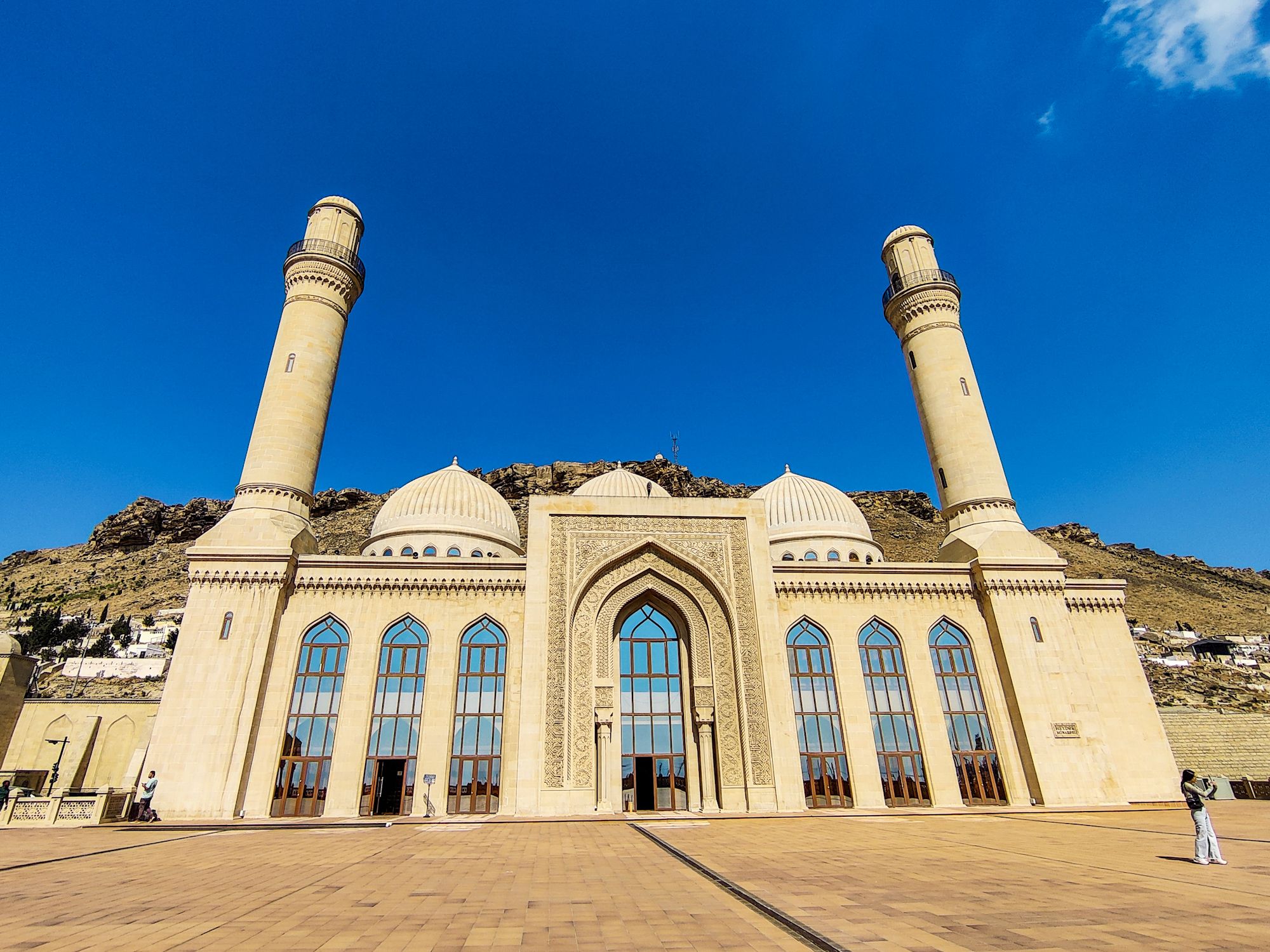
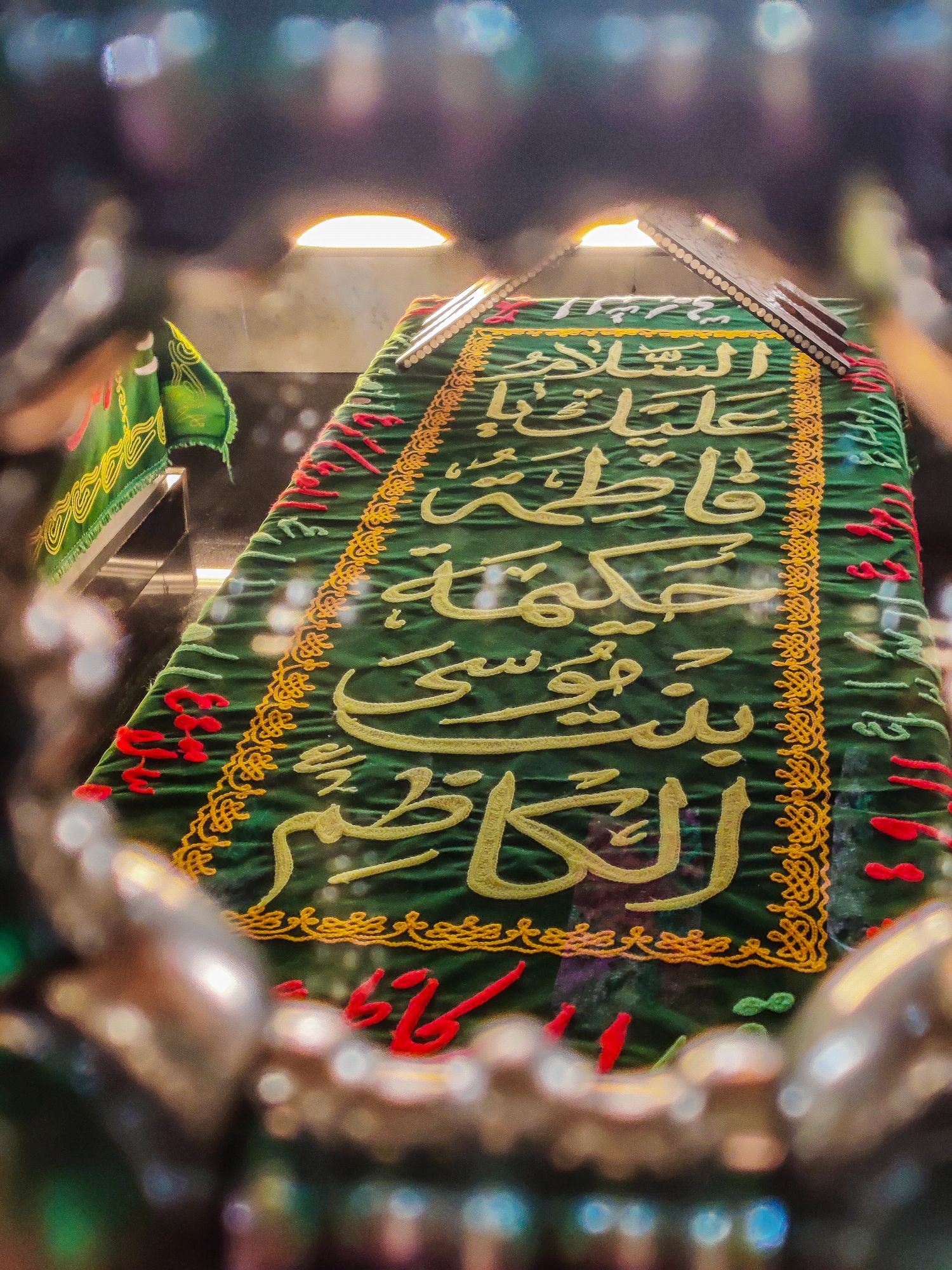
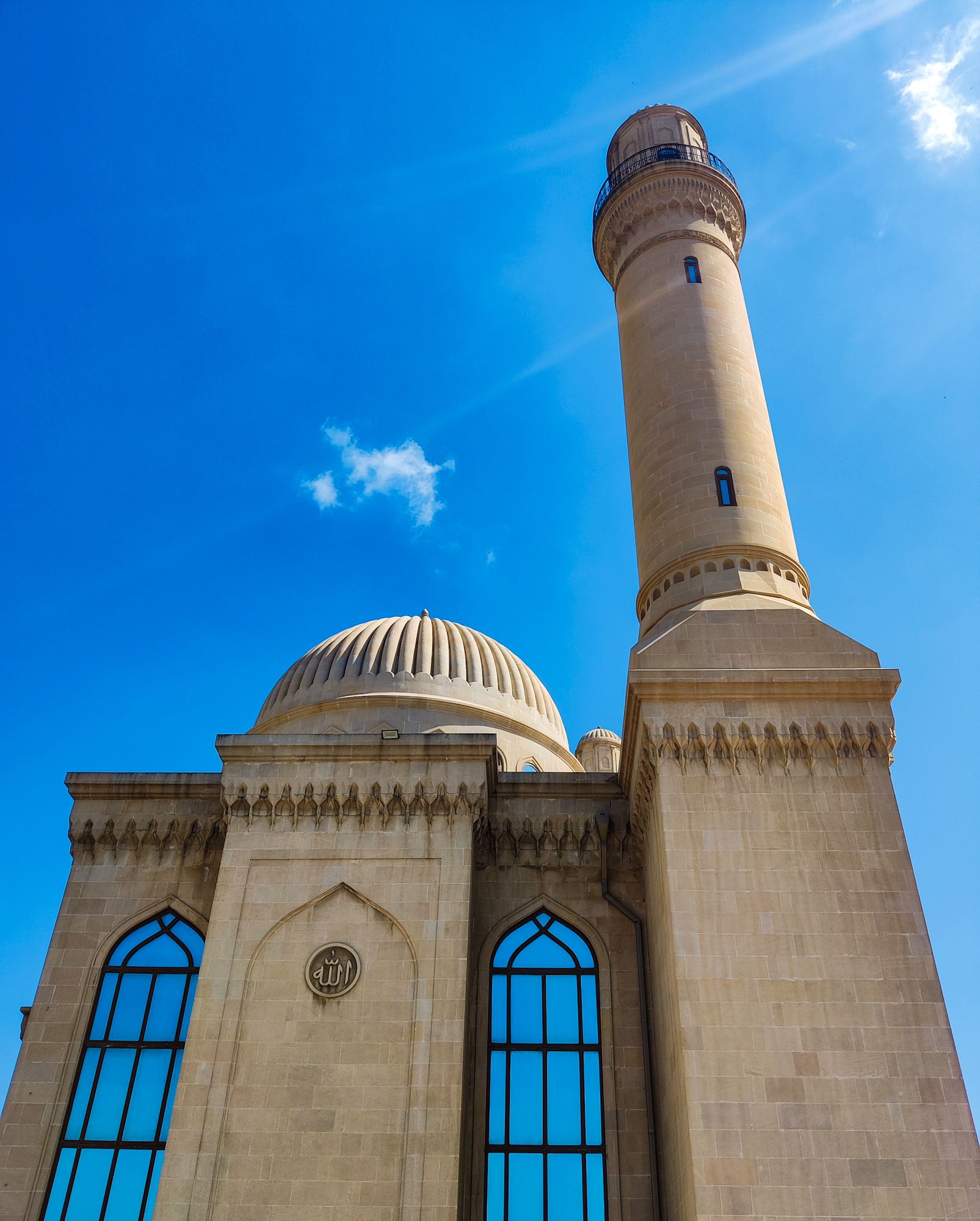
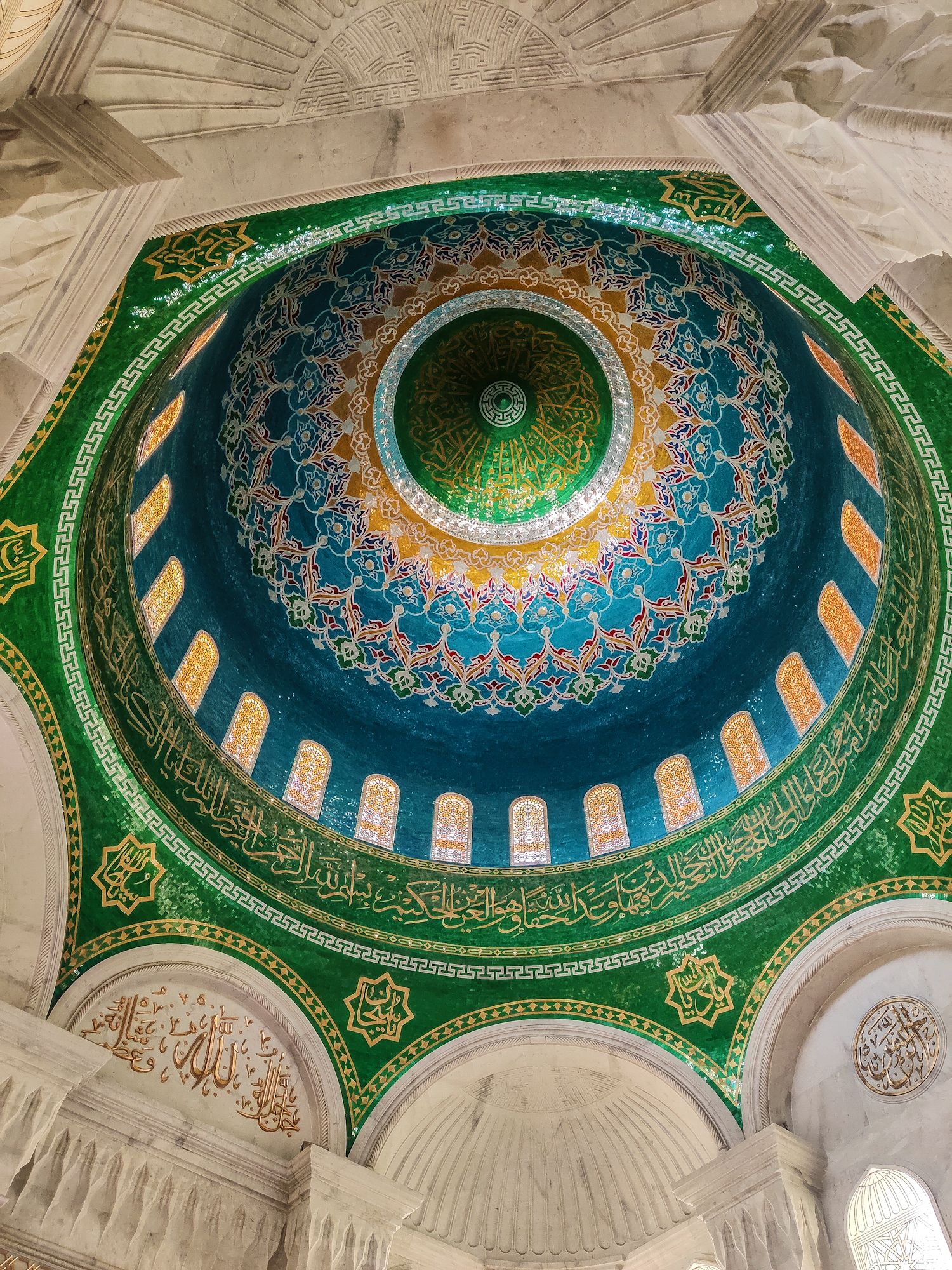
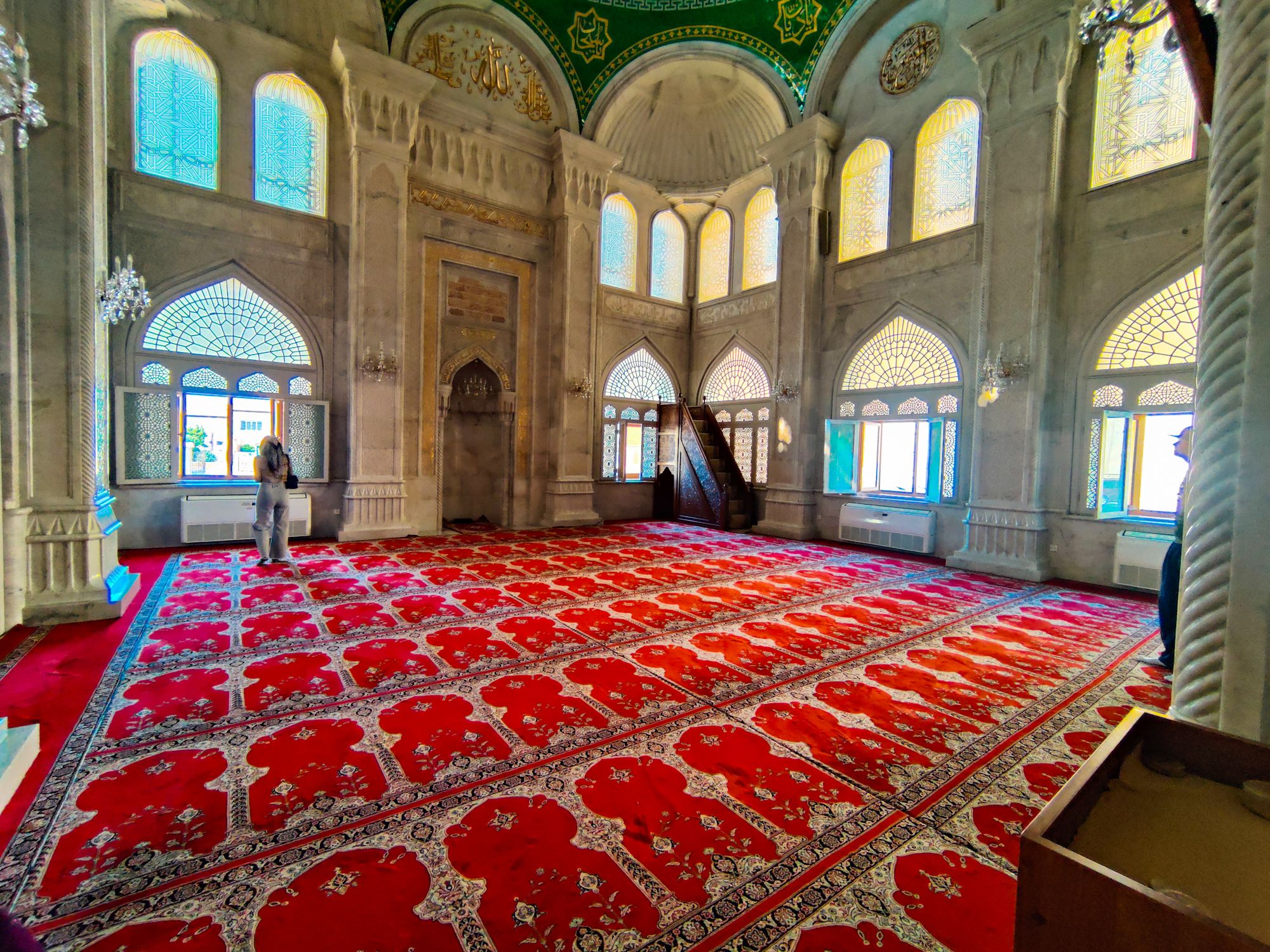
Gobustan Rock Art Cultural Landscape
Our next destination was about 90 minutes from the mosque. Midway, we had a layover at Salyan Highway in Gobustan to grab some refreshments. In addition to the snacks, there were fruits and vegetables too that were pretty cheap and fresh.

After almost half an hour, we reached Gobustan Rock Art Cultural Landscape. It represents the history of humanity from the Upper Paleolithic era to the Middle Ages in Eurasia. There are more than 6,000 rock engravings, called petroglyphs, on more than 1,000 surfaces of rocks which date back 5,000 to 20,000 years from now. They illustrate primitive men, ritual dances, boats with armed oarsmen, warriors with lances in their hands, animals, bullfights, camel caravans, and pictures of the sun and stars.
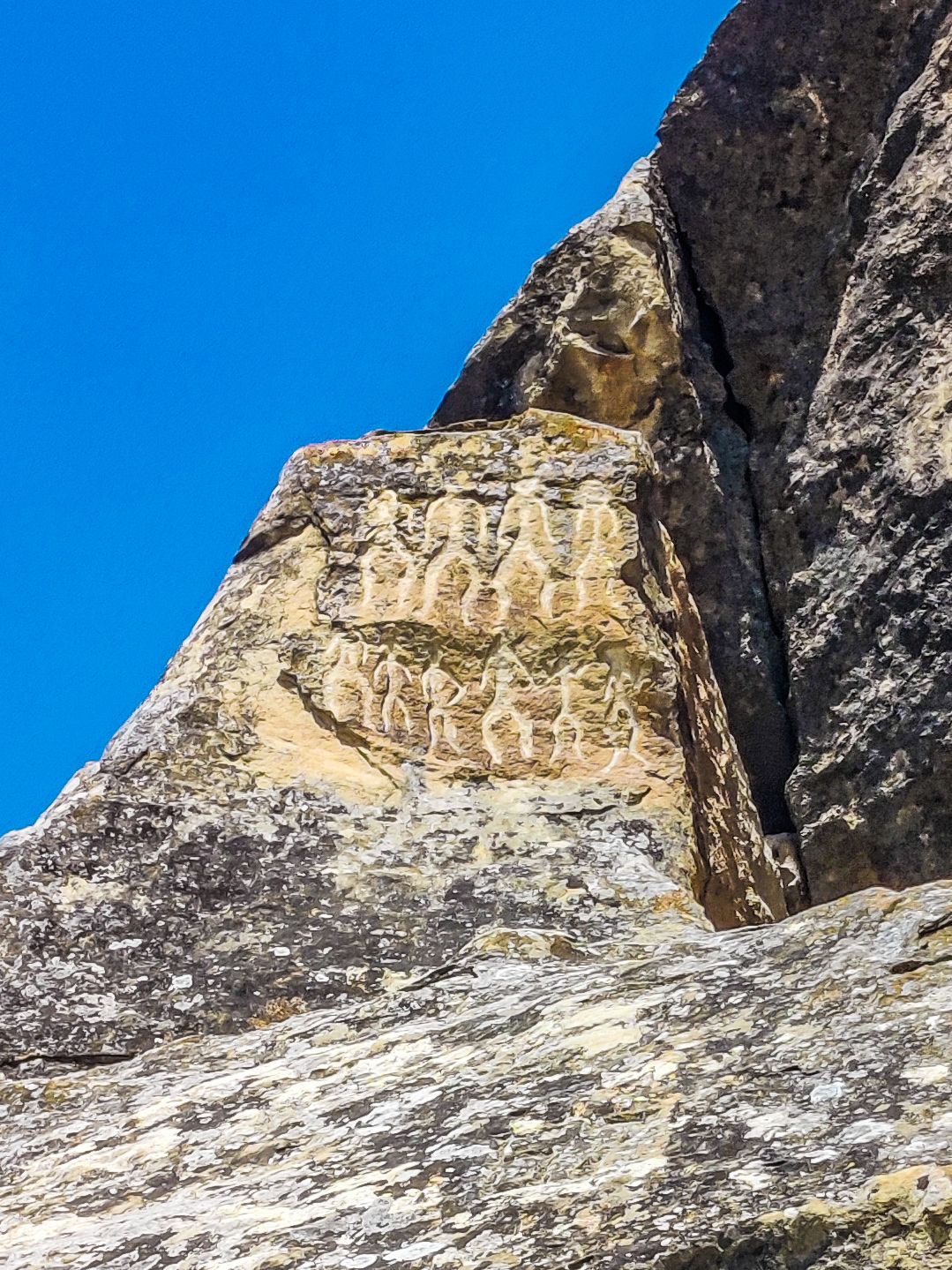
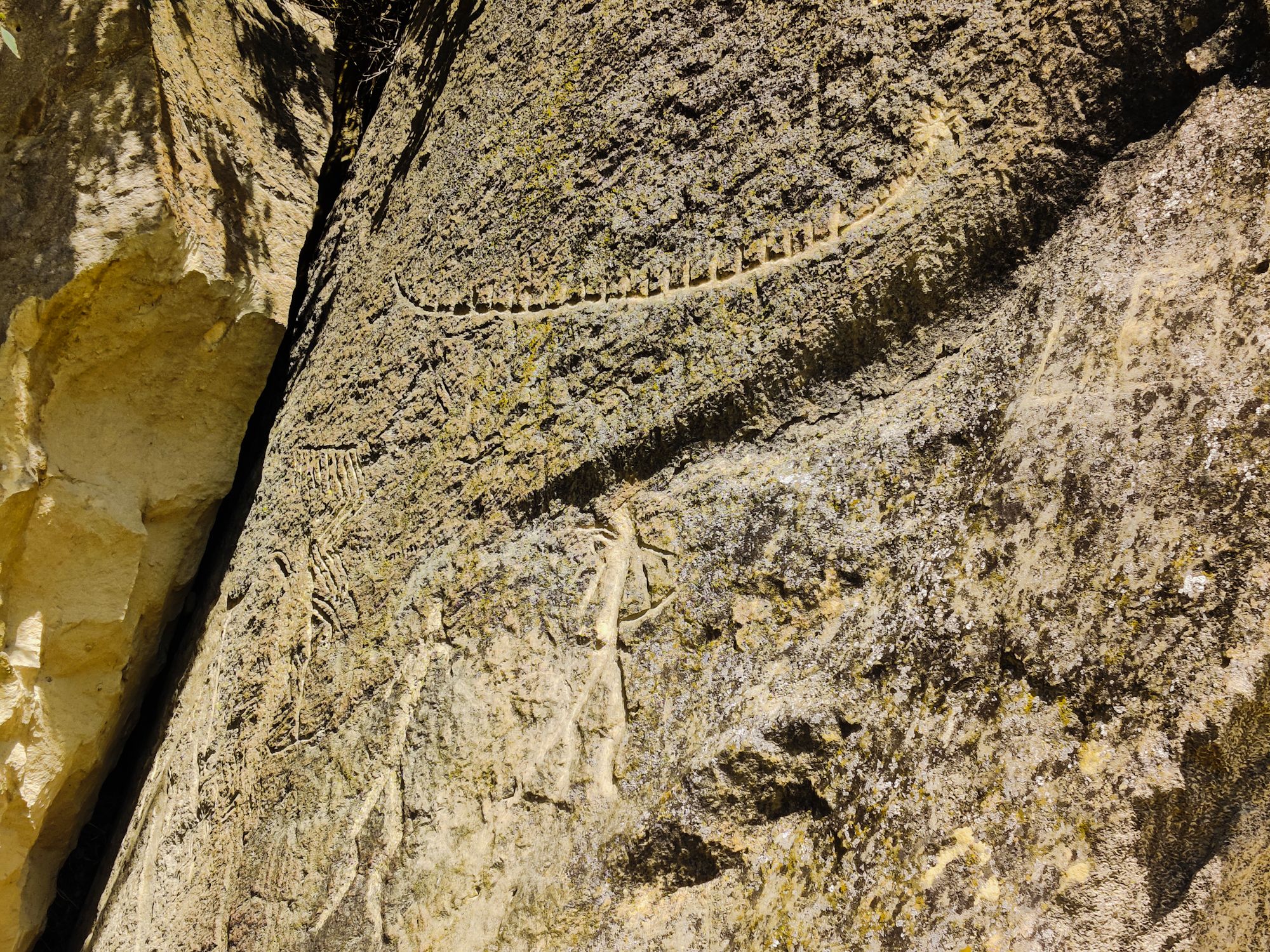
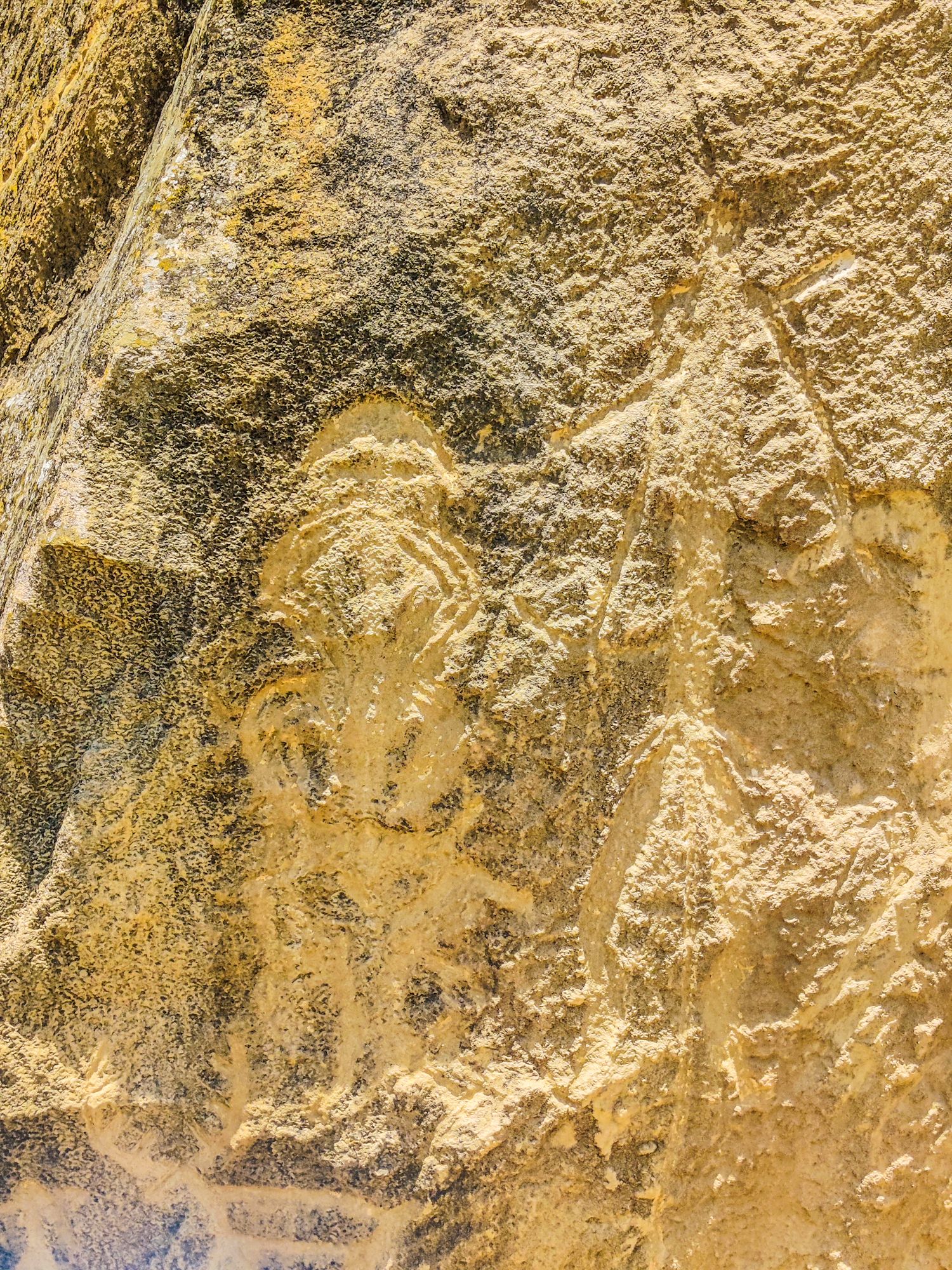
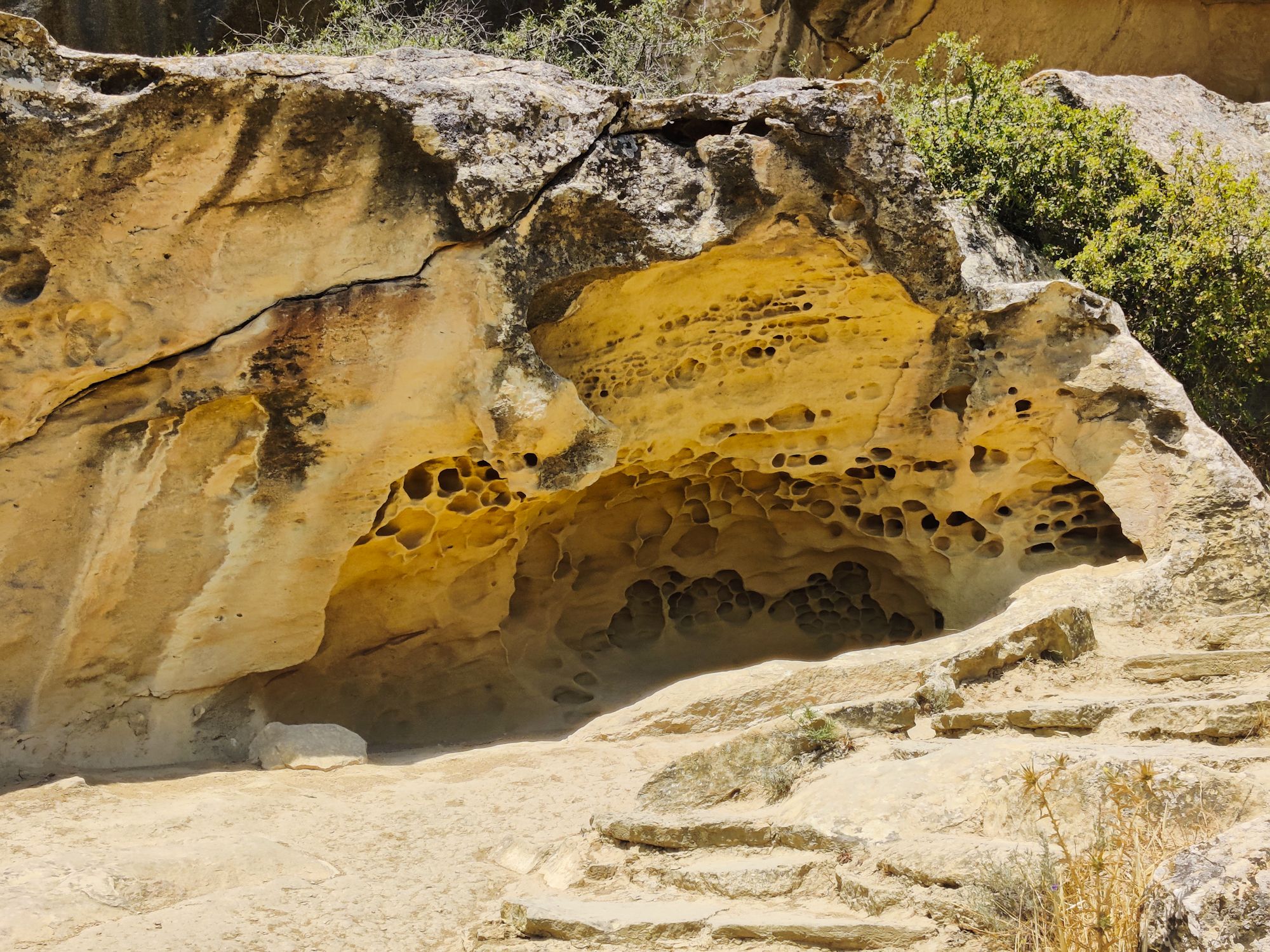
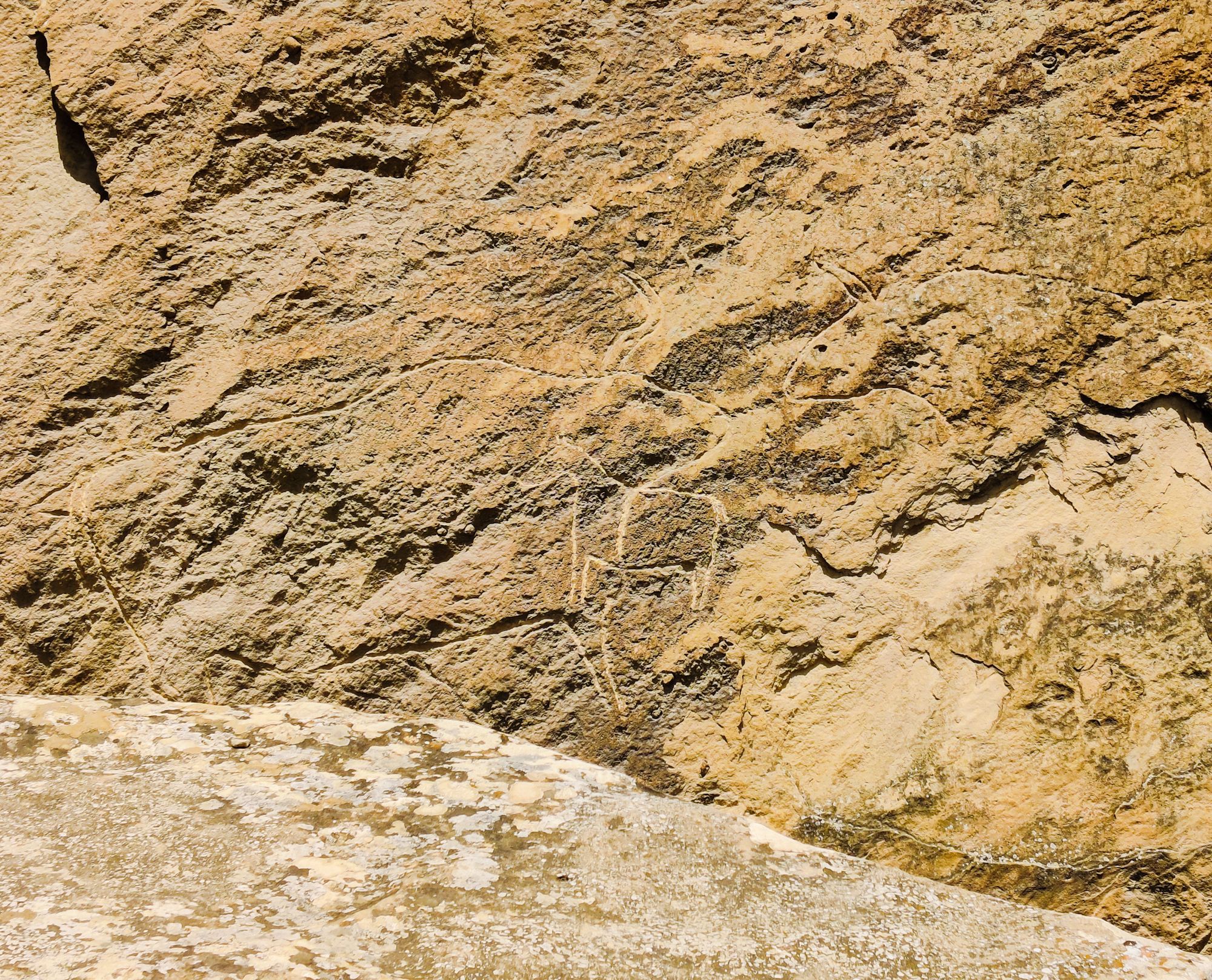
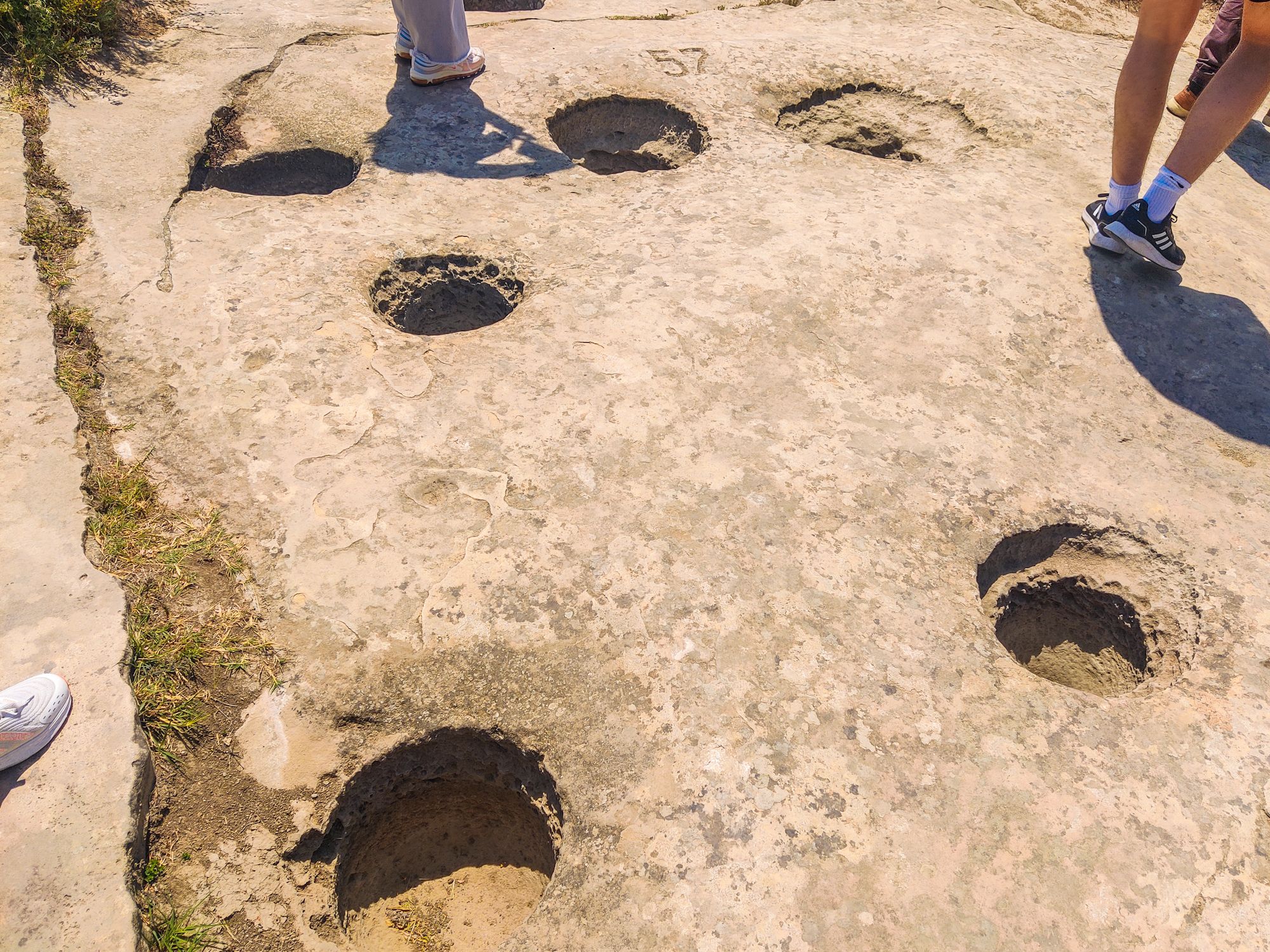
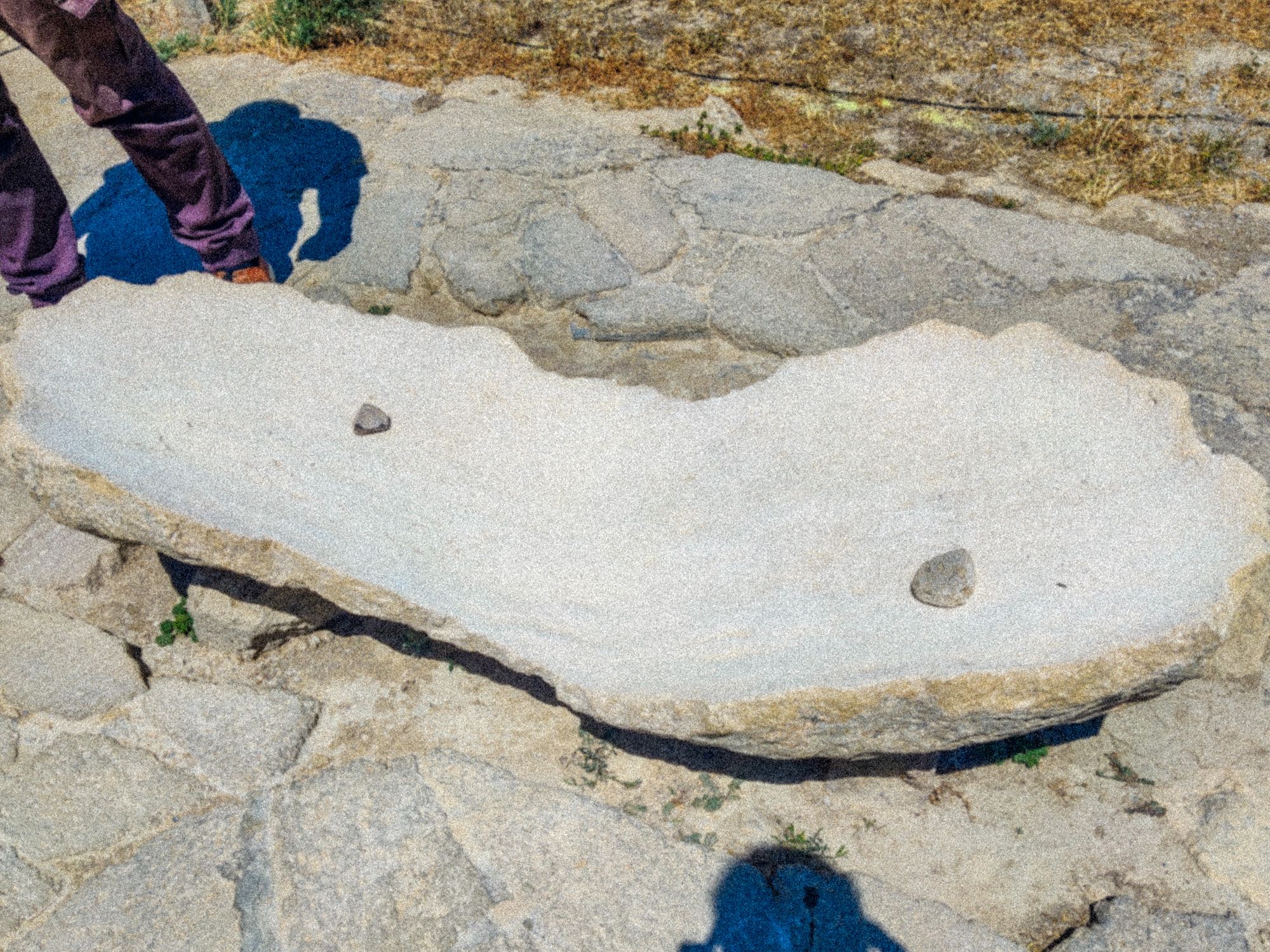
At the entrance, we also found a natural musical stone, called Gaval Dash, which can only be found in Gobustan, Azerbaijan. It is one of the four "singing stones" found there. When this big, two-meter-long stone is struck with smaller rocks, it makes a hollow, ringing sound, resembling the sound of a tambourine, or "gaval" in the Azerbaijani language. This unique resonance is created by microscopic holes inside the rock, which are believed to result from the dry climate and the effect of natural gas in the region.
Because of the quality and density of the rock art engravings, Gobustan was declared a UNESCO World Heritage Site in 2007.
Gobustan Mud Volcanoes
You must have heard of volcanoes that erupt lavas. But what is a mud volcano?
It is a landform created by the eruption of mud, water, and gases (mostly methane). We tried placing a tissue paper at the eruption sight which caught fire as we provided a spark with a cigarette lighter. I also managed to capture the eruption in slow motion. It was fun.
It is estimated that half of the planet's estimated 700 mud volcanoes are located in Gobustan, Azerbaijan, and the Caspian Sea. Tourists are often found bathing in mud, which is thought to have medicinal qualities.
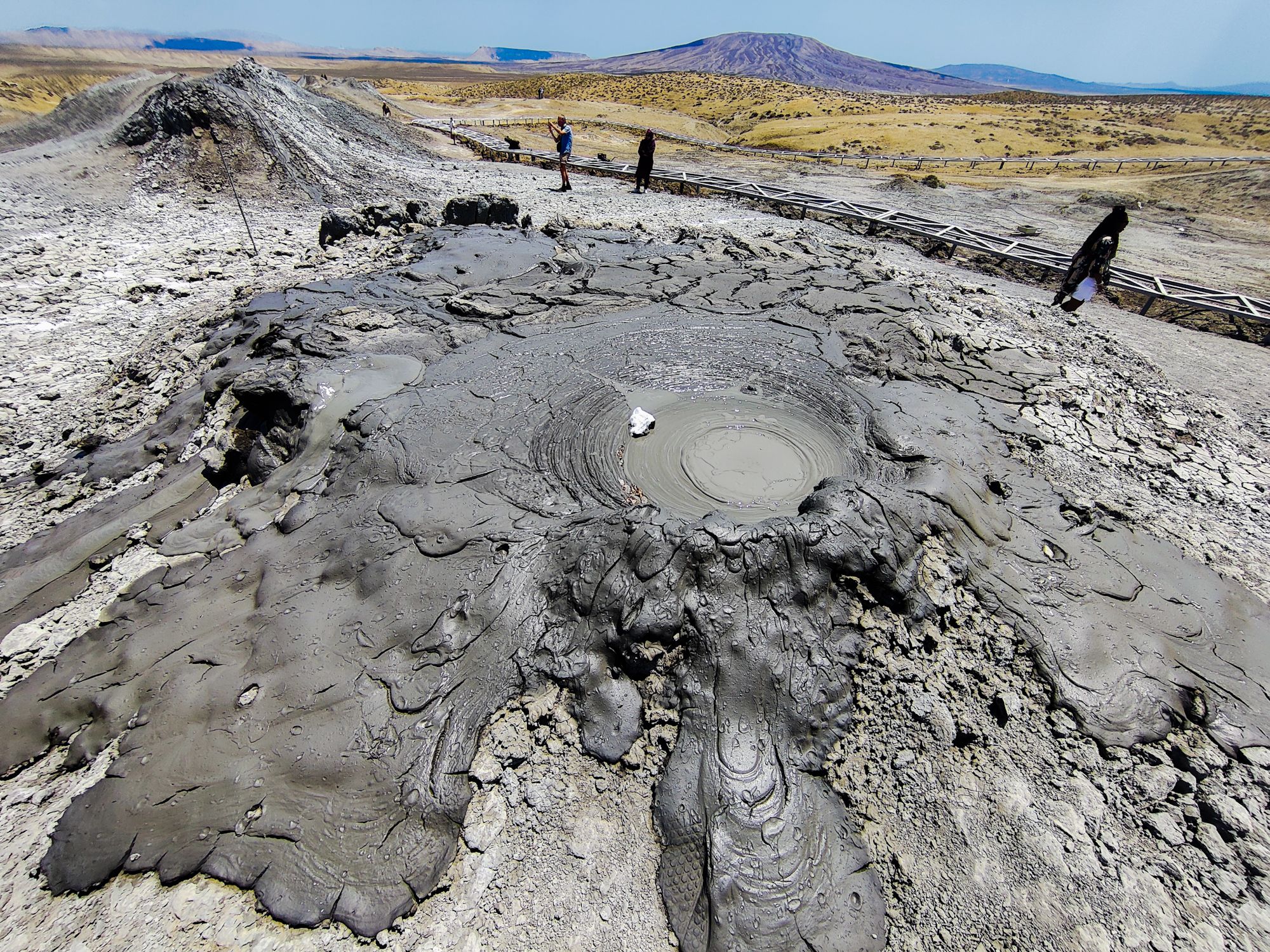
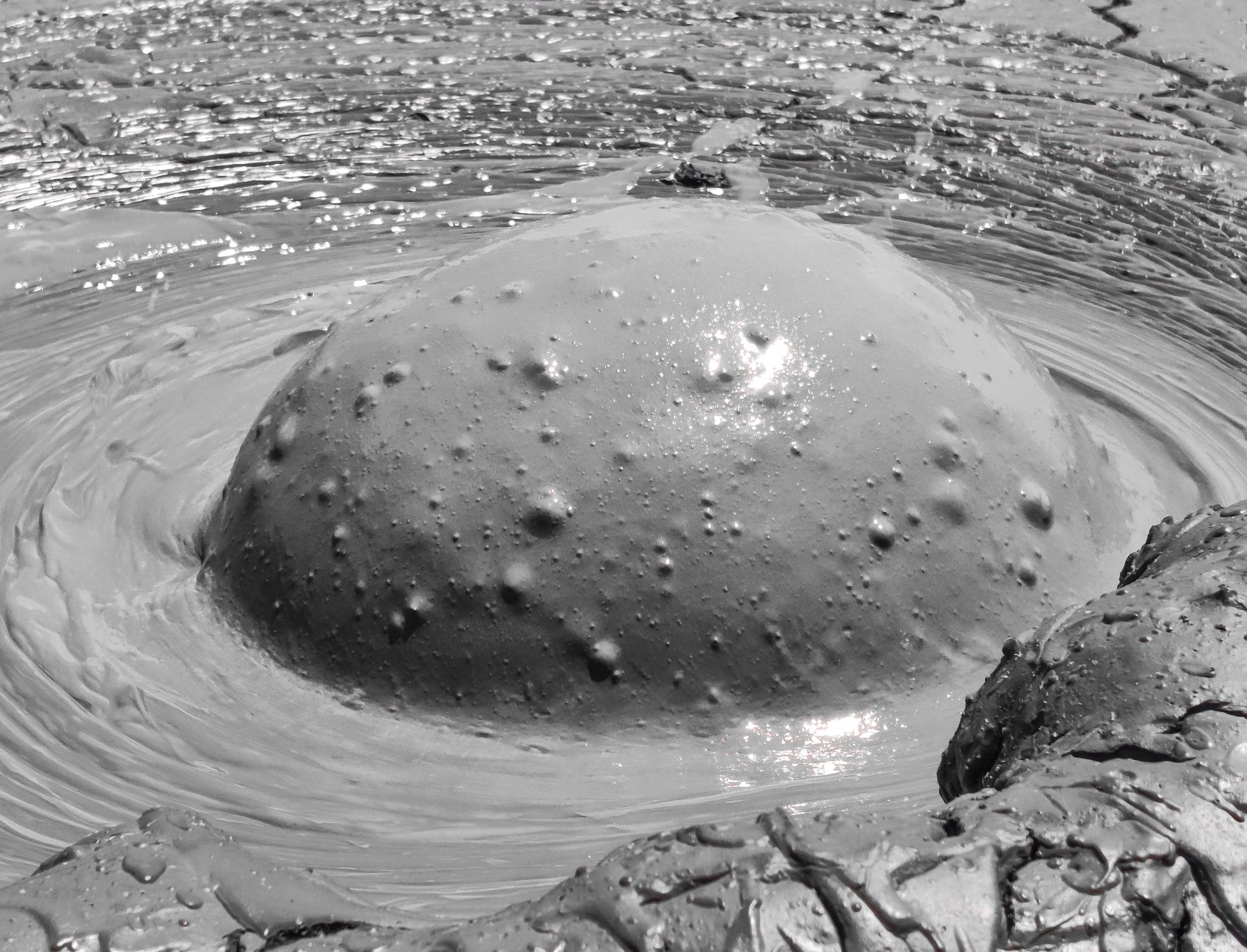
The next thing on our plan was to go to Baku again and have our lunch. On our way back, Rza played "Tajdaar-e-Haram" by Atif Aslam. Even being a Taoist, he said that he listens to this track 4-5 times every day as it gives him some kind of spiritual relief. The interesting part was that there was no other Muslim in the car. There were 3 Christians and an atheist in the car all enjoying this rendition in their own ways.
Lunch @ Nogul Lounge & Terrace
After a long journey back from Gobustan to the center of Baku, we stopped by Nogul for Lunch. I was wondering what kind of food Rza would order that would suit the tastes of a group of Americans, Britishers, Koreans, and Pakistanis. But to our surprise, the food satiated everyone's hunger. It included mushroom soup, lobia toyuq langet ile (cowpea with chicken langet), and pasta.
It was here when Rza shared a famous line about the relationship between IT and Pak-Indo region. He said and I quote, "Wherever you spit in India or Pakistan, you'll find an IT guy there". Not the best way to say it, but yes, it is becoming kind of true. It was also there that I learned that Pakistanis are perceived there as good programmers and Indians as conmen who would always trick you into a scam for their benefit.


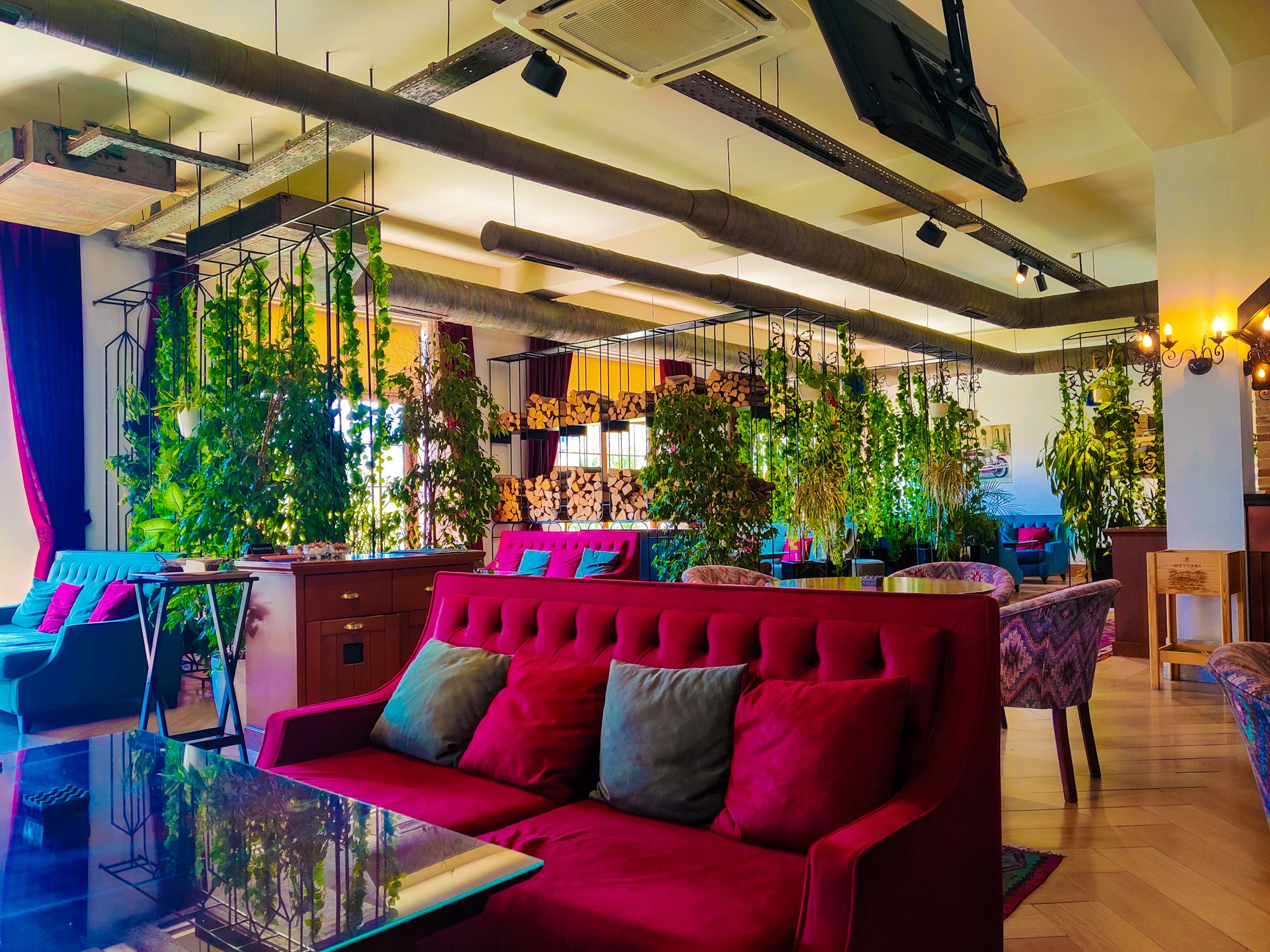
Yanar Dağ - The Burning Mountain
Our next place was also a magical show of methane but in a different style. A hillside with thin, porous holes in sandstone formations at its base that emanates flames from the vents that rise to a height of 10 meters setting it ablaze. Going near it felt like walking into a baking kiln. The mechanism is the same; natural gas comes out of the pores which is then set on fire like a gas stove in our kitchens.
The fire is never extinguished and the atmosphere around this open fireplace is filled with the smell of gas. There is no seepage of mud or liquid here, which distinguishes it from the mud volcanoes of Gobustan. There wasn't much to do here, except watching this wonder of nature in action and taking pictures while uttering SubhanAllah.
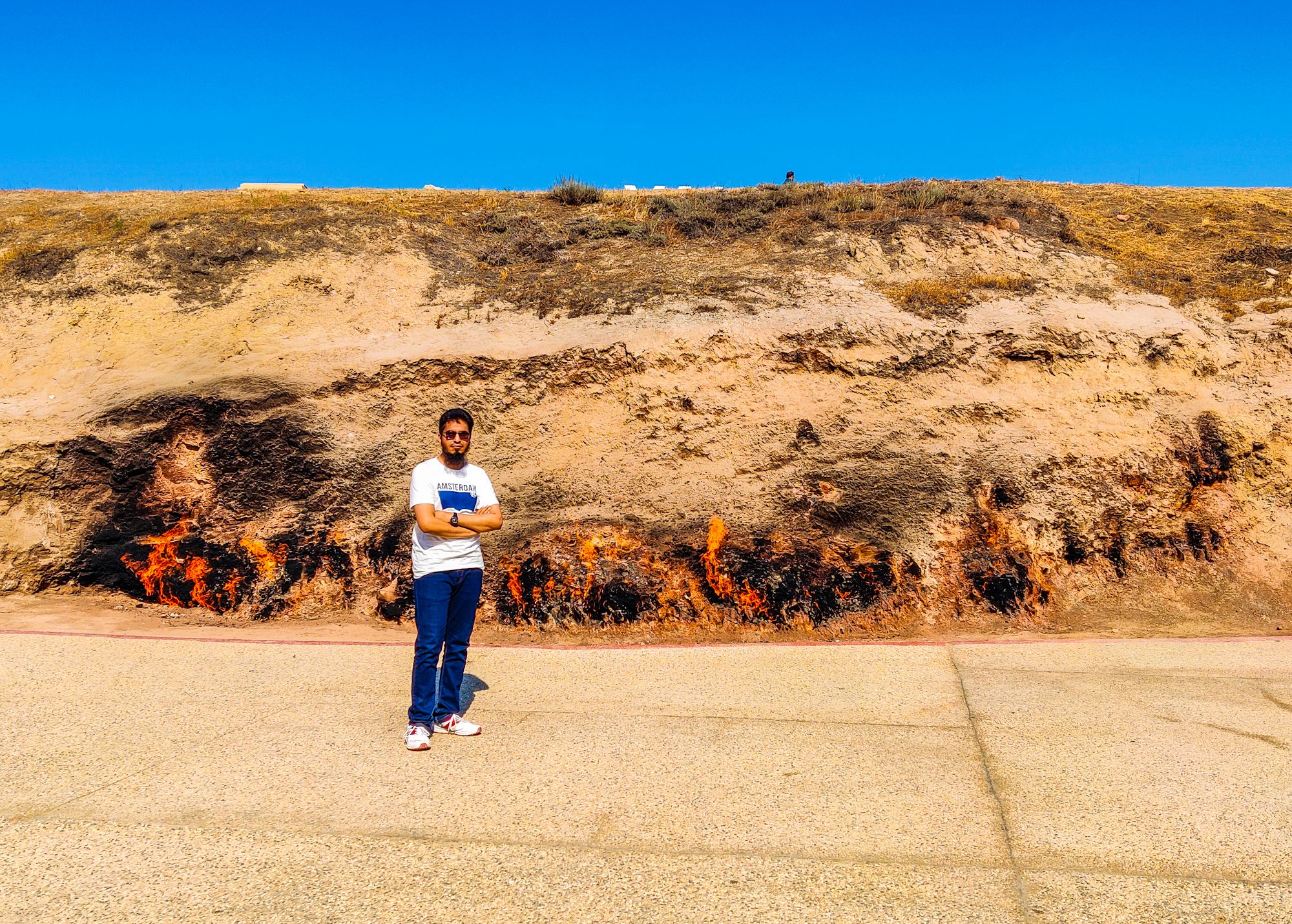
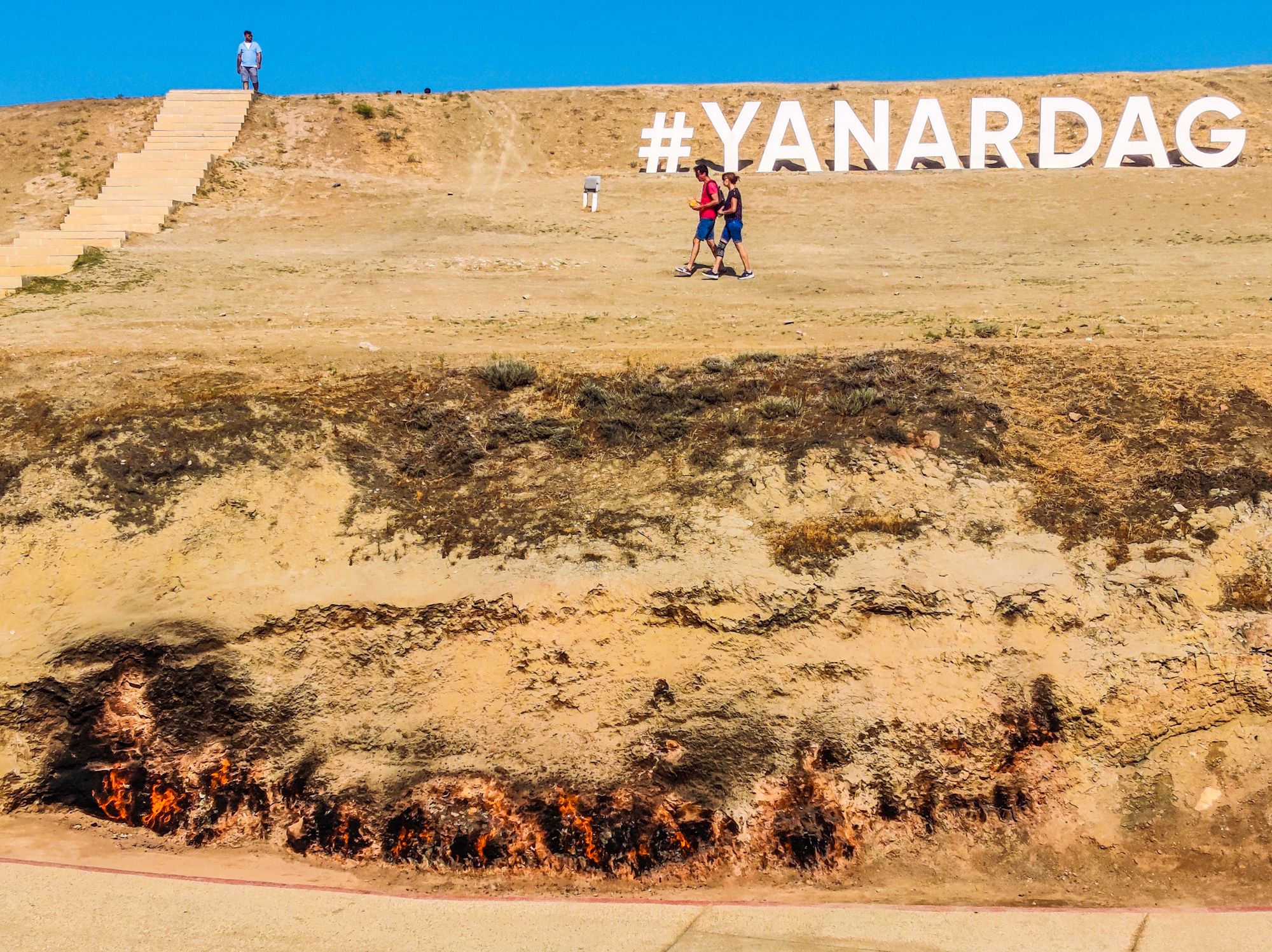
Ateshgah - The Fire Temple
This site was also historical but very different. Based on Persian and Indian inscriptions found there, it used to be a place of religious importance for Hindus, Sikhs, and Zoroastrians as they used it for worshipping. It is a pentagonal complex, which has a courtyard surrounded by cells and an altar in the middle. There are almost 20 cells there, half of which were closed. There was a cell that served as a stable, another for curing people, another for ascetics, and so on. Some of the cells now serve as a museum.
It was abandoned in the late 19th century and the natural eternal flame went out in the mid-20th century, after the exploitation of petroleum and gas in the area. It is now lit by gas piped from the nearby city. Rza further explained the history of the temple to the group fellows which even I don't fully remember now. However, he was doing his job honestly and by the end of our visit to this temple, I could see him sitting in one corner completely exhausted. I felt for him.
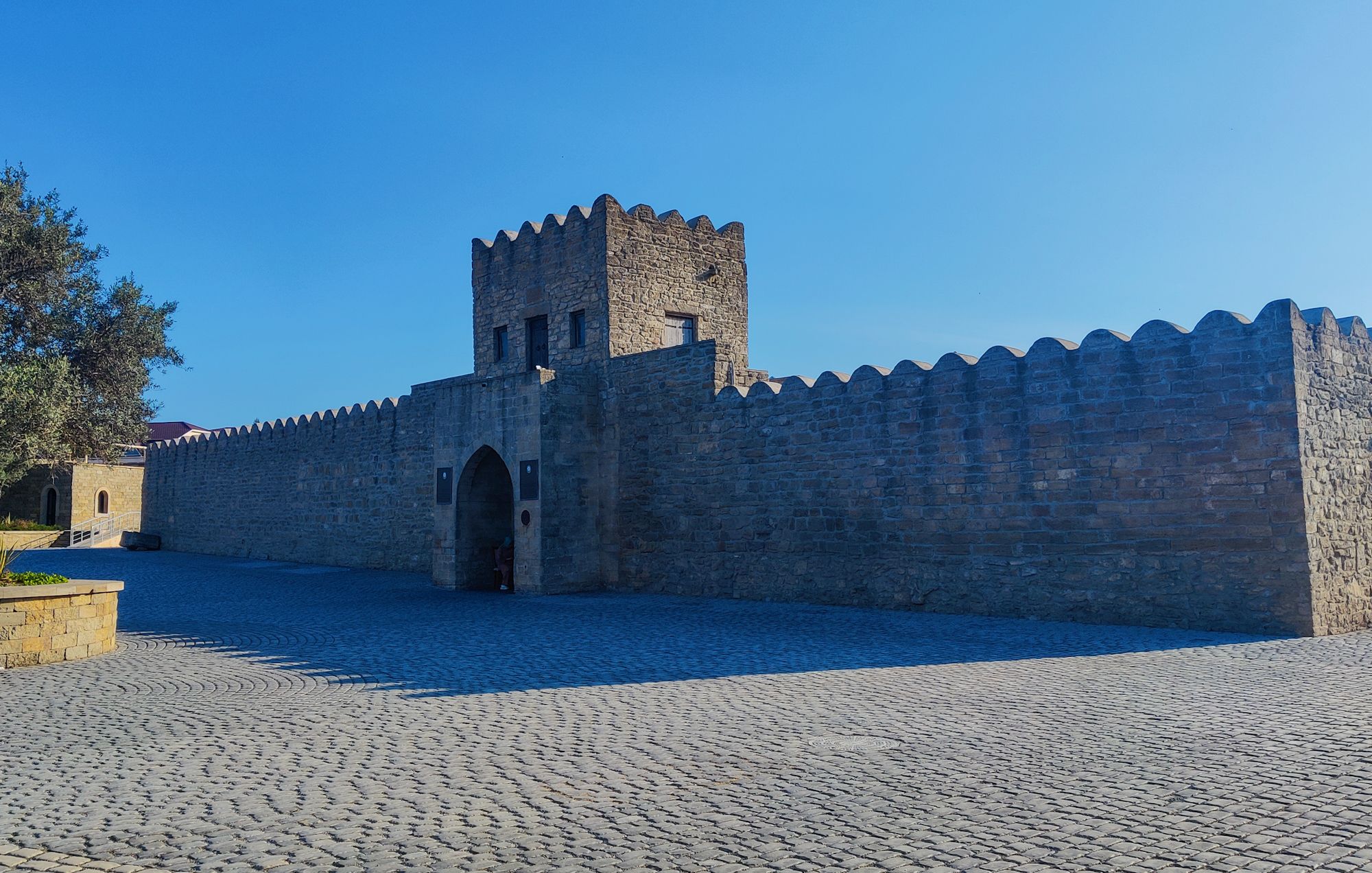
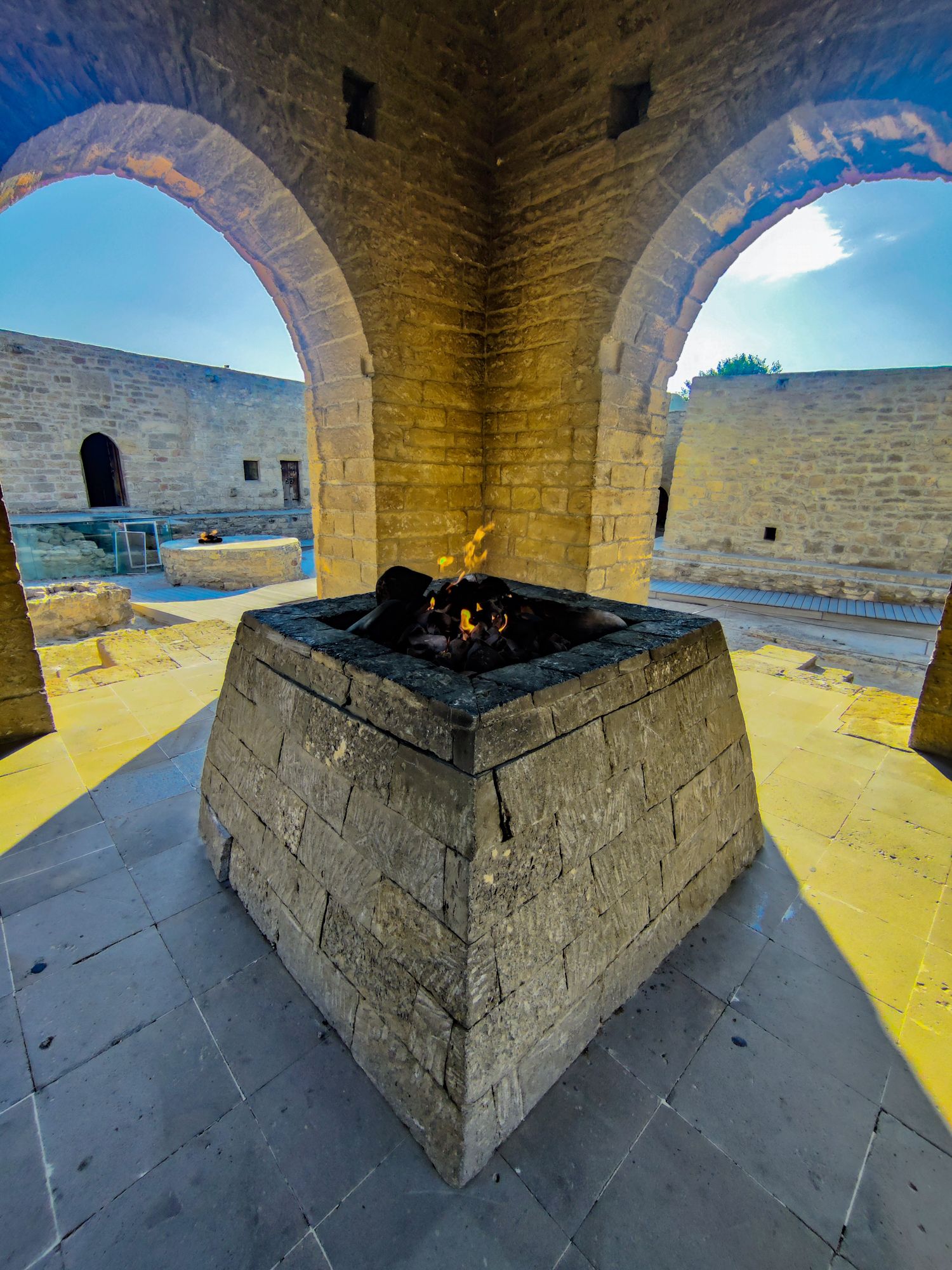
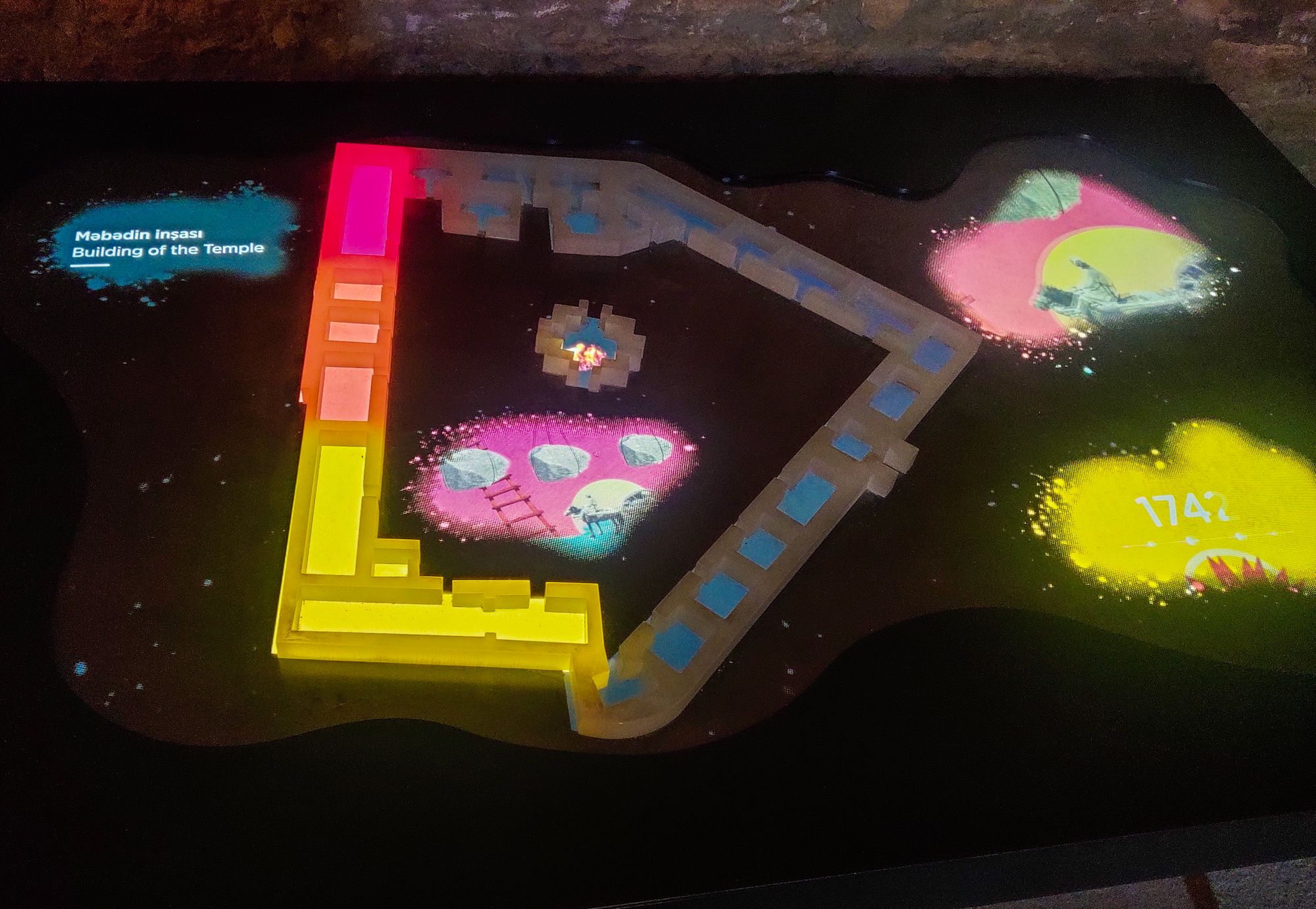
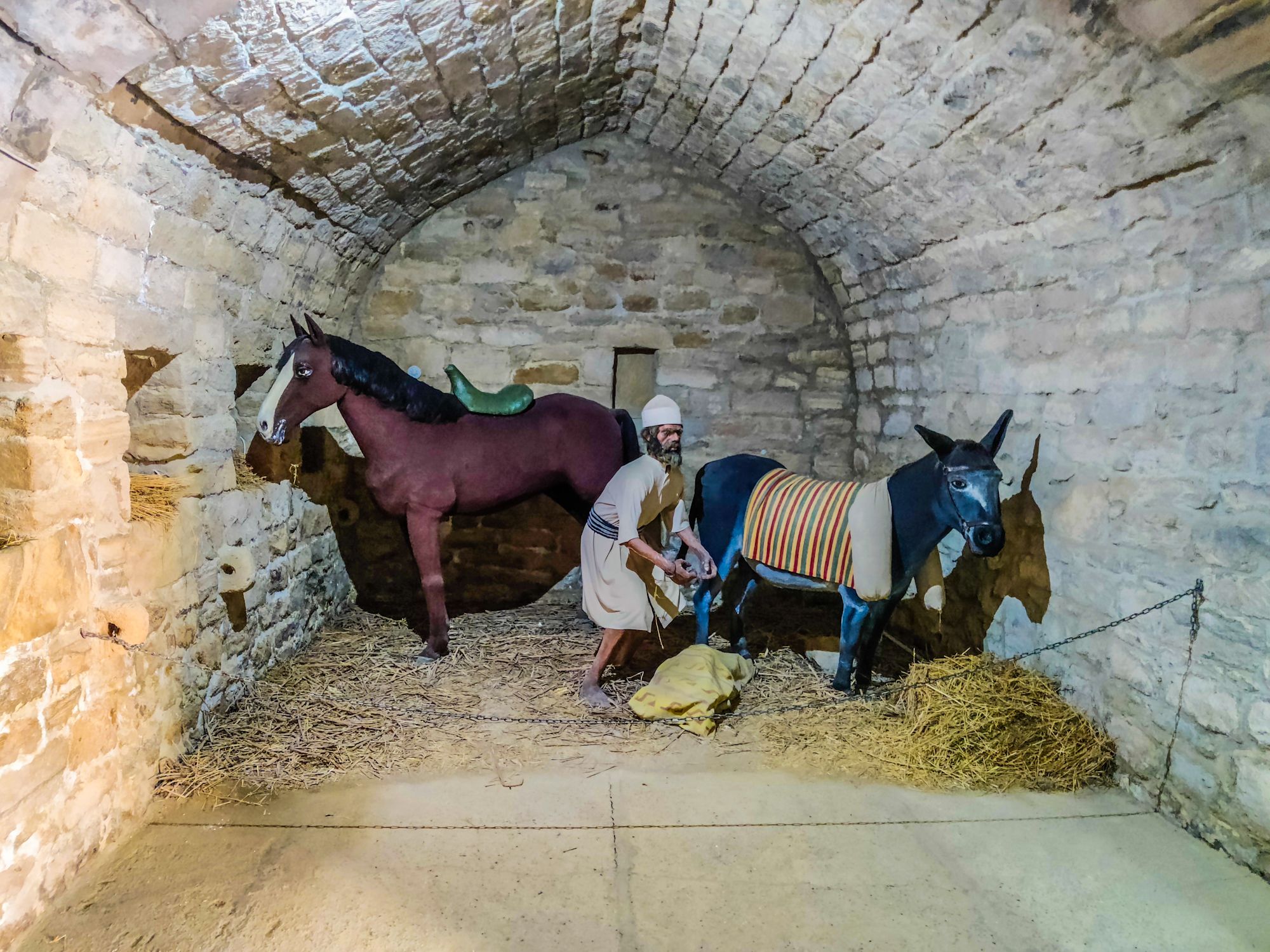
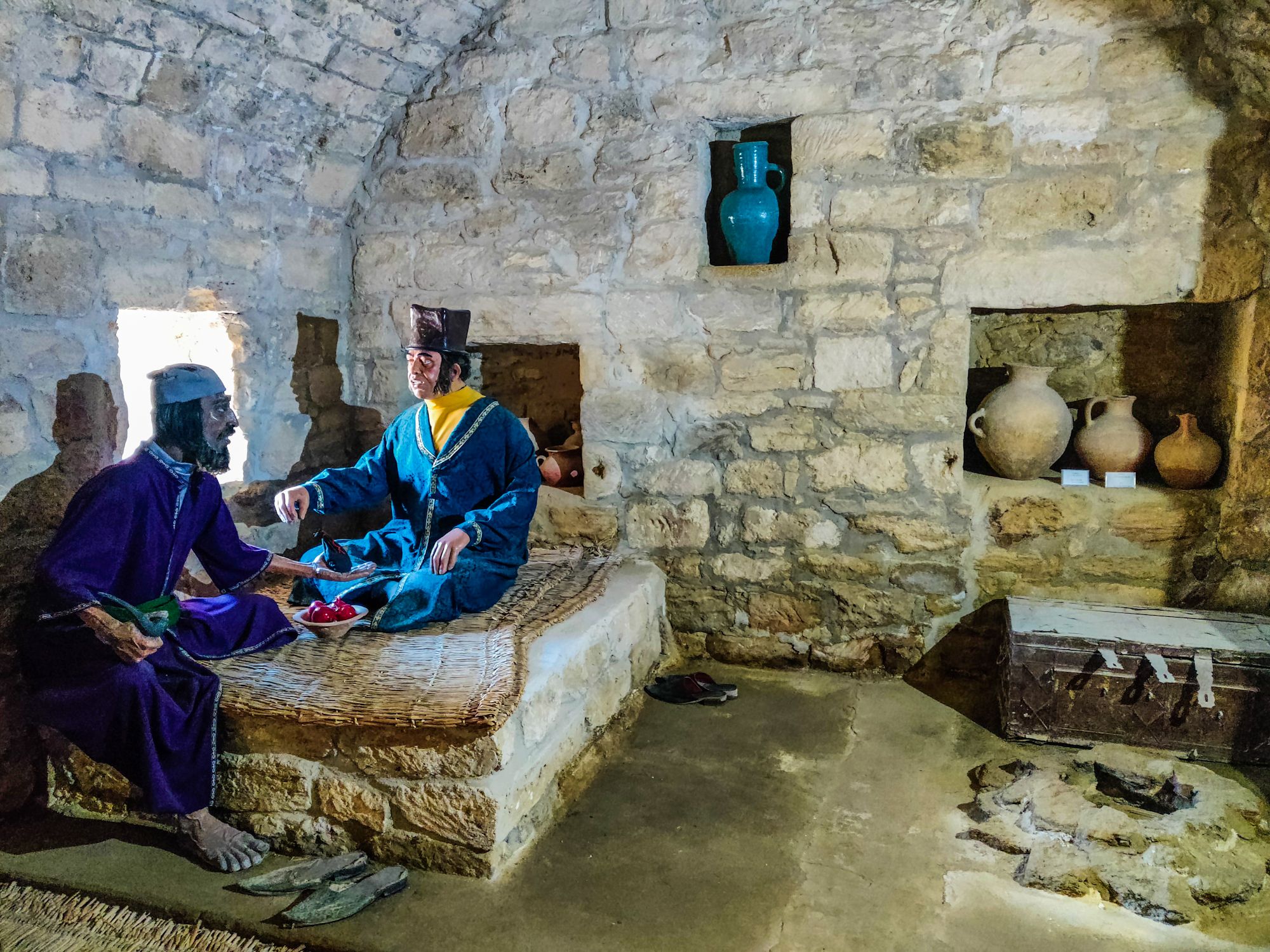
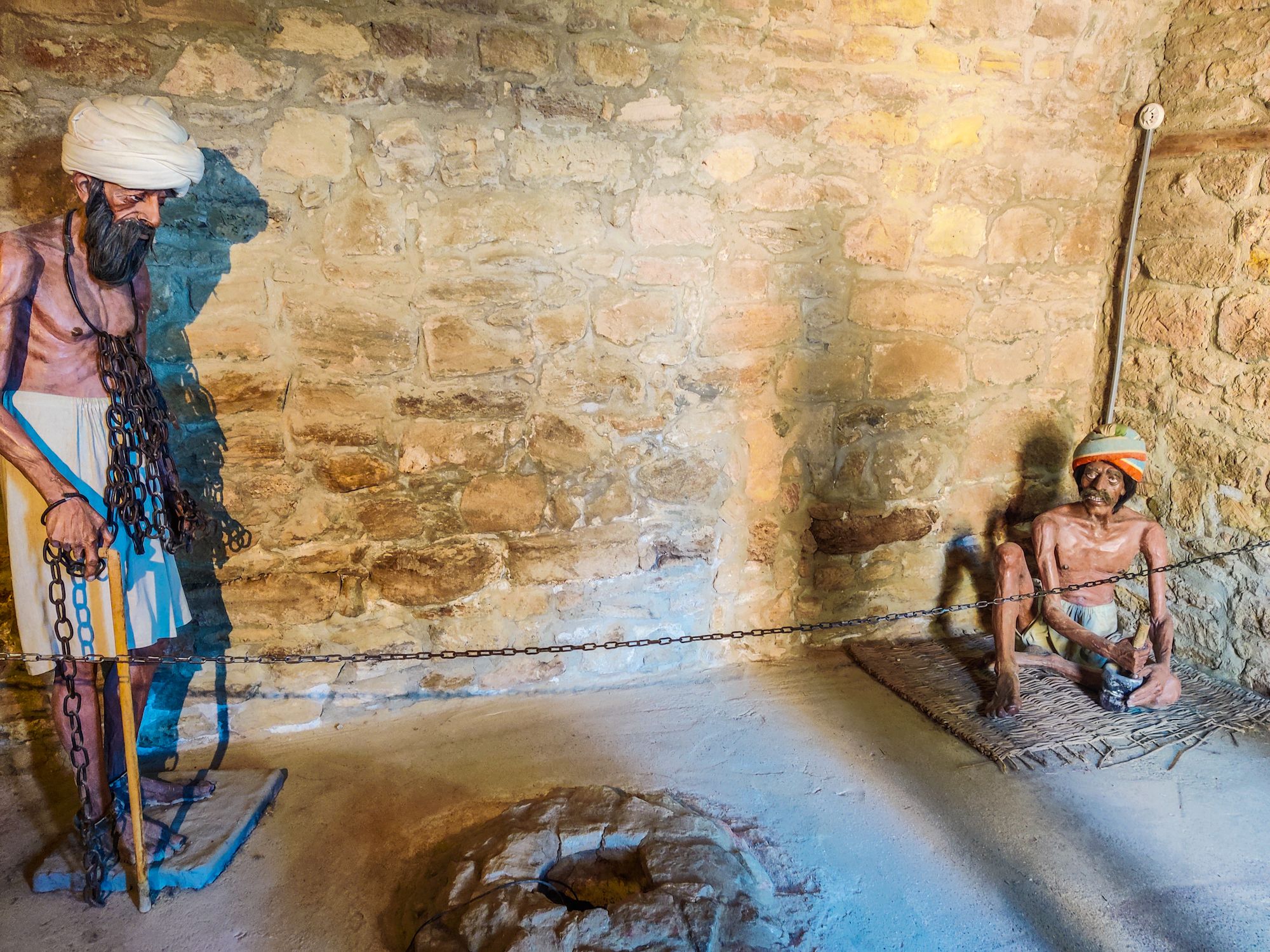
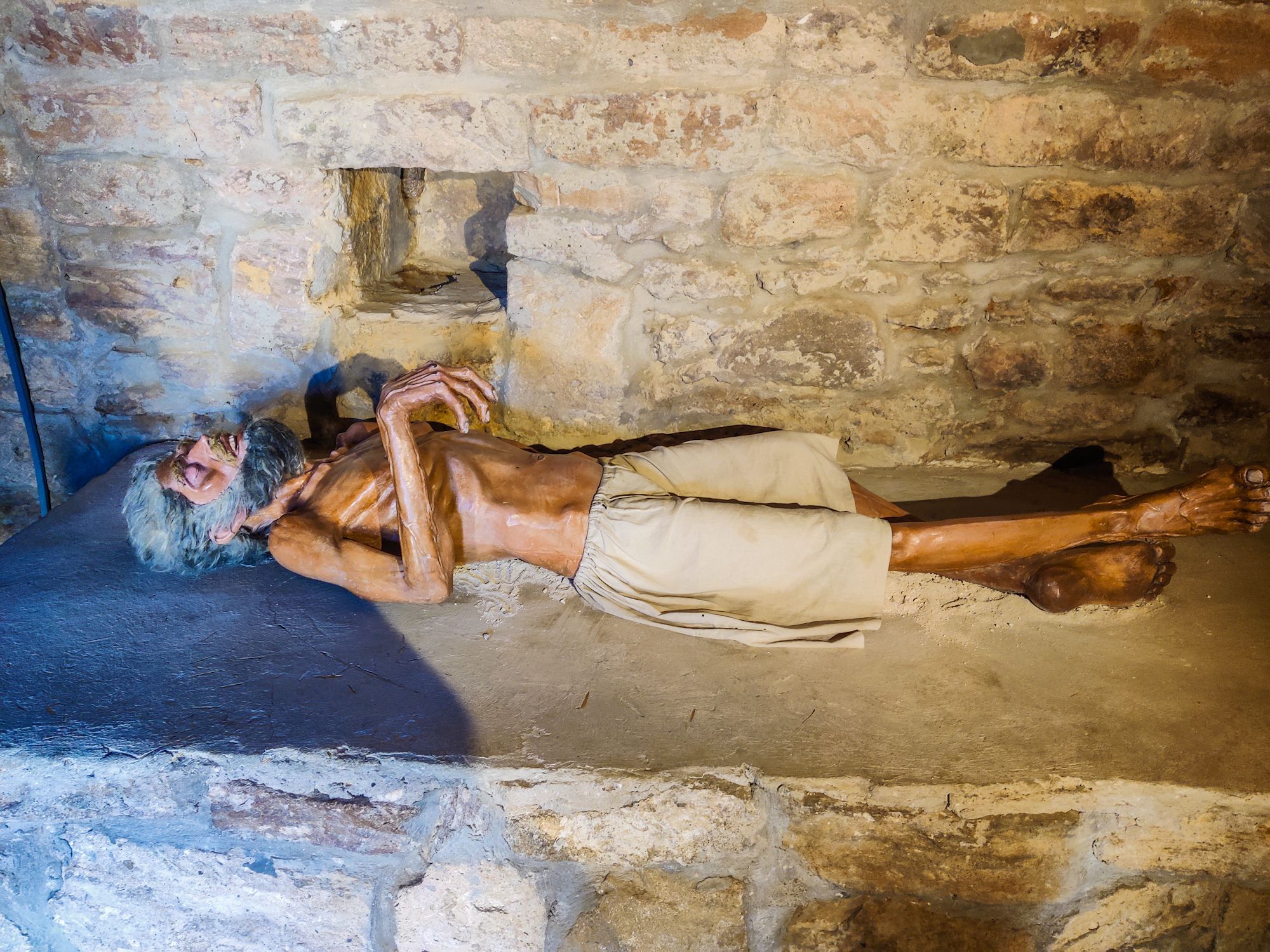
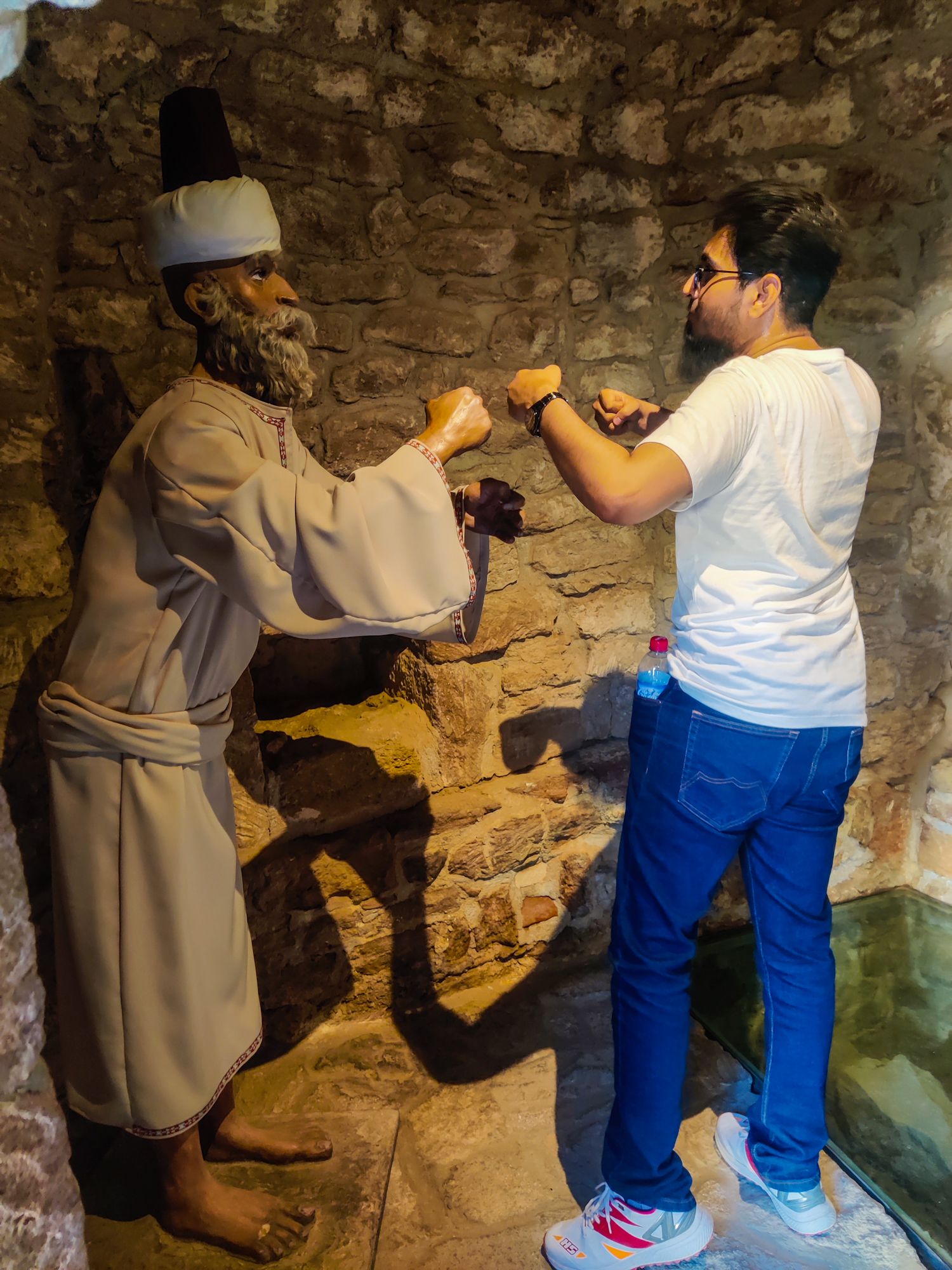
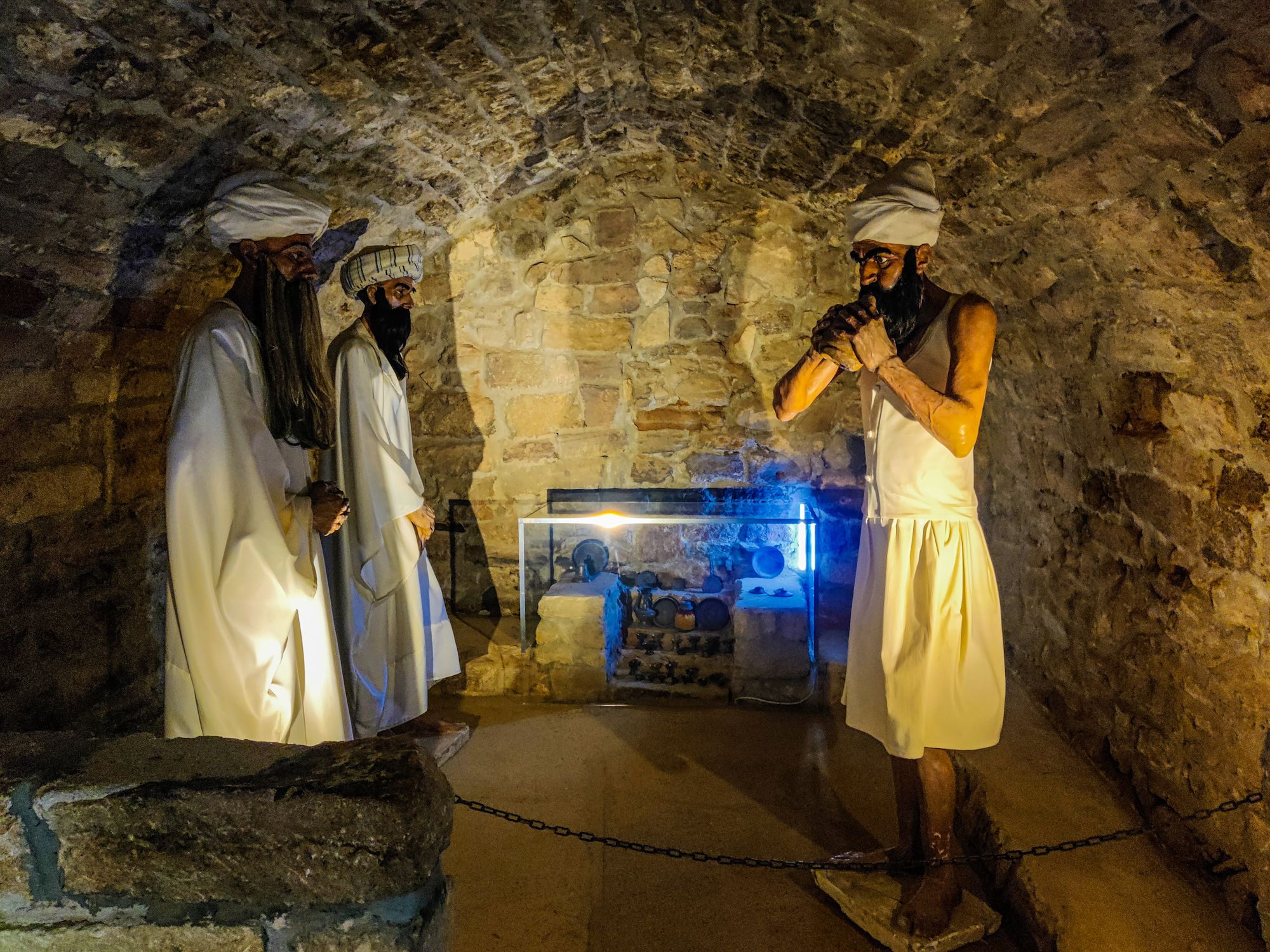
Heydar Aliyev Center
We reached the Heydar Aliyev Center in the evening. We knew beforehand that it would be closed by then but the purpose of our visit to this place was something else.
I for one wanted to see its remarkably distinctive architecture exhibiting a flowing, curved style that eschews sharp angles, and then take a picture with "I Love Baku" written in front of it. Another purpose was to unwind in its green landscape after a long exhausting day full of history. Coming from the deserted remnants of the past to the freshness of nature always feels so relieving.
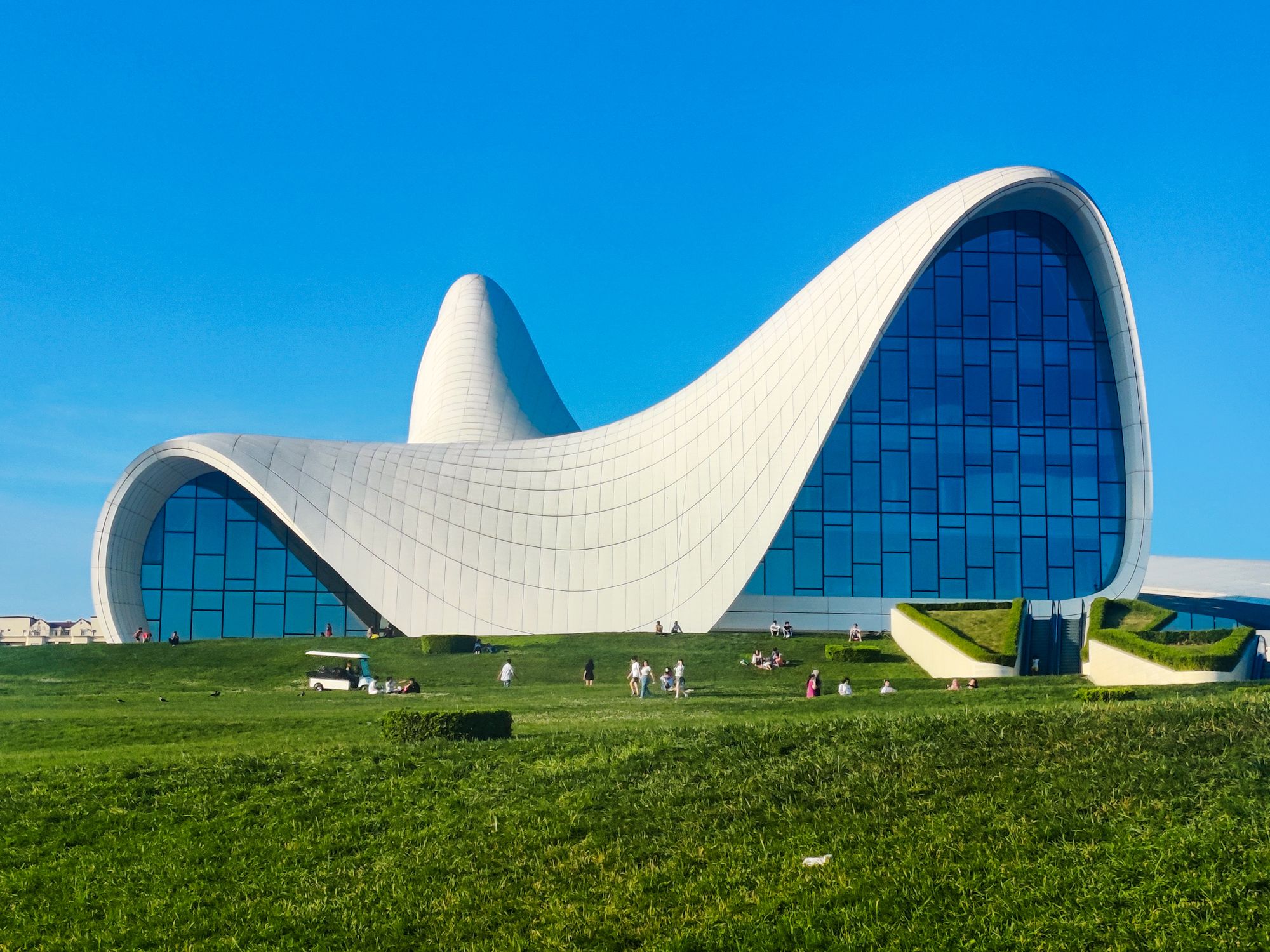
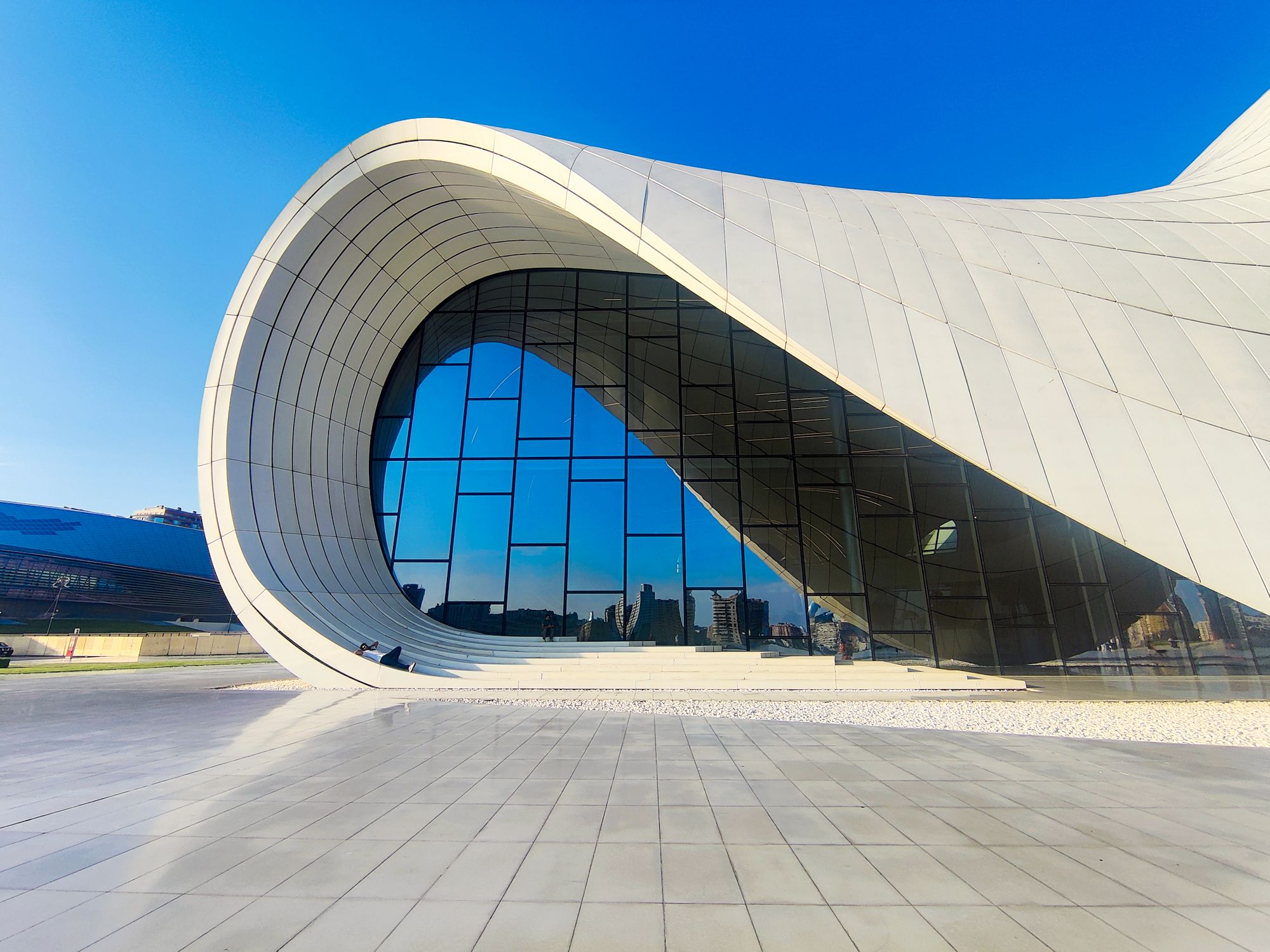
This marked the end of the day. Everyone bid farewell to one another as they were dropped off at their desired places. I also thanked Rza and told him how I had read good things about him as a guide on Google even before meeting him and how I wanted him to be my guide on this tour. He was very humble in taking the praises as I was appreciating him and letting him know how through his efforts he has earned my respect even more.
What's next?
There are a few more places I have explored in Baku but I'll give you a virtual tour of those briefly with pictures in the upcoming post. Till then, Adios!
